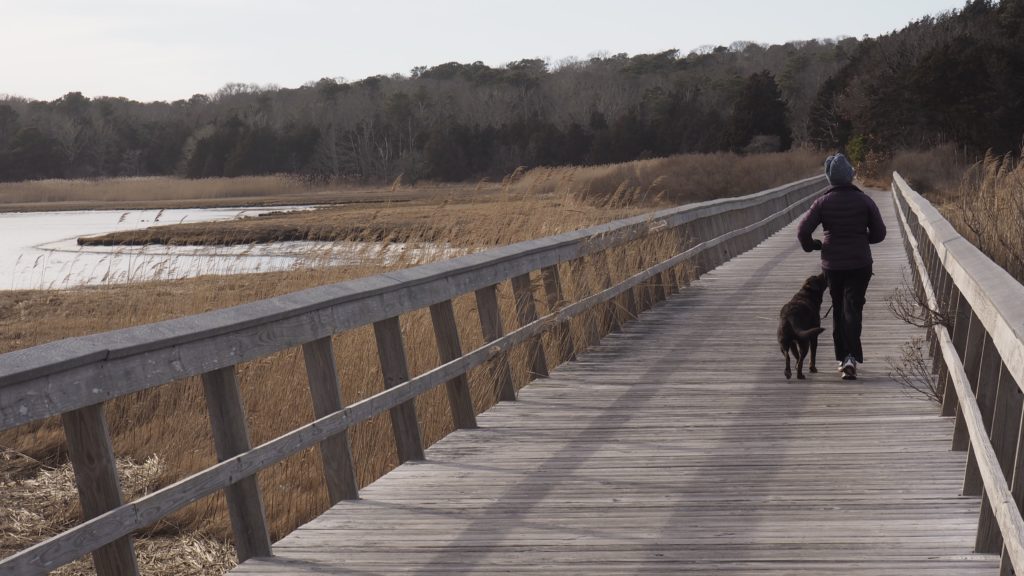
We travel far to discover what we take for granted when it’s close at hand. Living in South Jersey, we met people who had never been to Philadelphia, 20 minutes away. So, we decided to give Cape Cod the same treatment we give places we travel to visit and put together a post of some of the places we’ve explored, such as the trail from the Salt Pond Visitors Center to Coast Guard Beach.

Nauset Marsh & Fort Hill
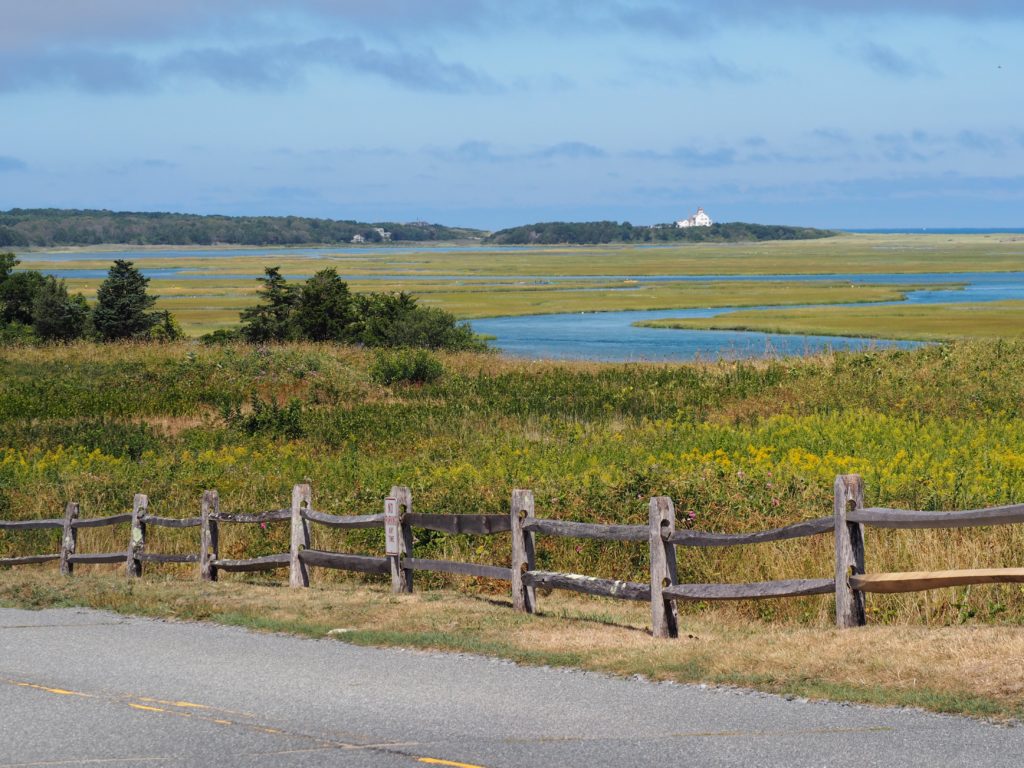
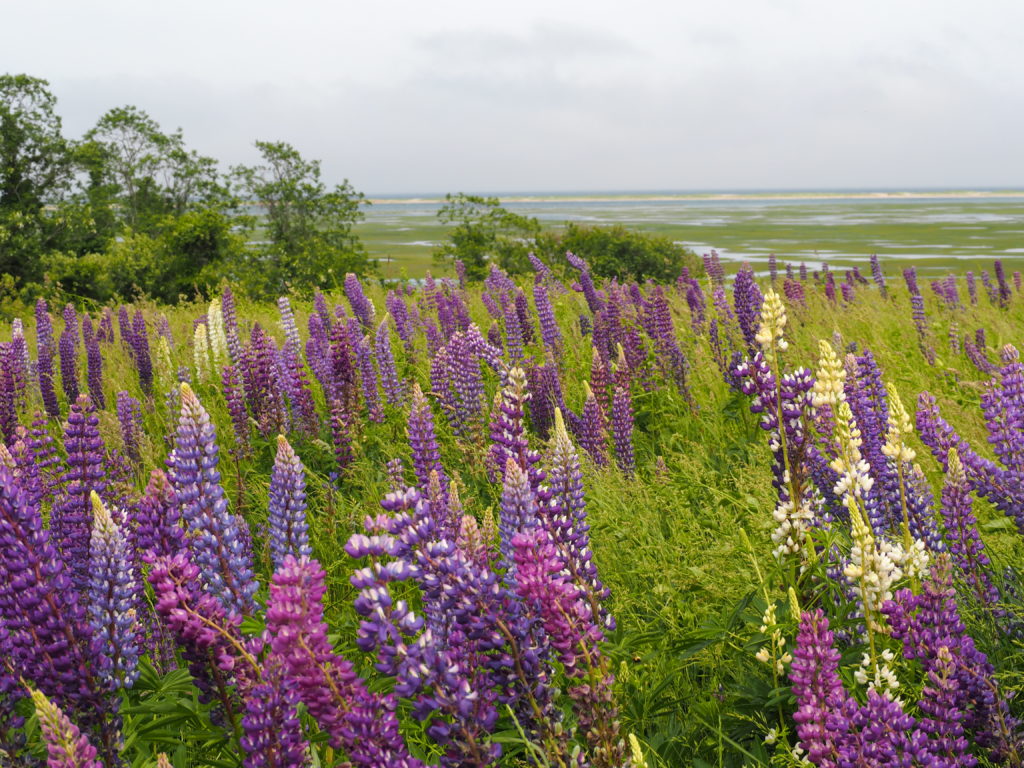
As you might imagine from the photos, Fort Hill is a popular spot. On occasion, we’ve seen a line of cars waiting for a parking spot. We, of course, turn around and go home because it’s five minutes from the house. Within a short walk are an old sea captain’s house (tours courtesy of the National Park Service), a red maple swamp with boardwalks, a very large rock Native Americans used for sharpening (tool maintenance, of course) and great views of where there were Native American villages when Champlain came through (1605) and made a map of those seasonal villages around the edge of the bay/marsh (inhabited since 4,000 BCE). The marsh is also where our neighbor has his oyster grant, lest we forget that people still make a living from the sea.
French Cable Station Museum, Orleans
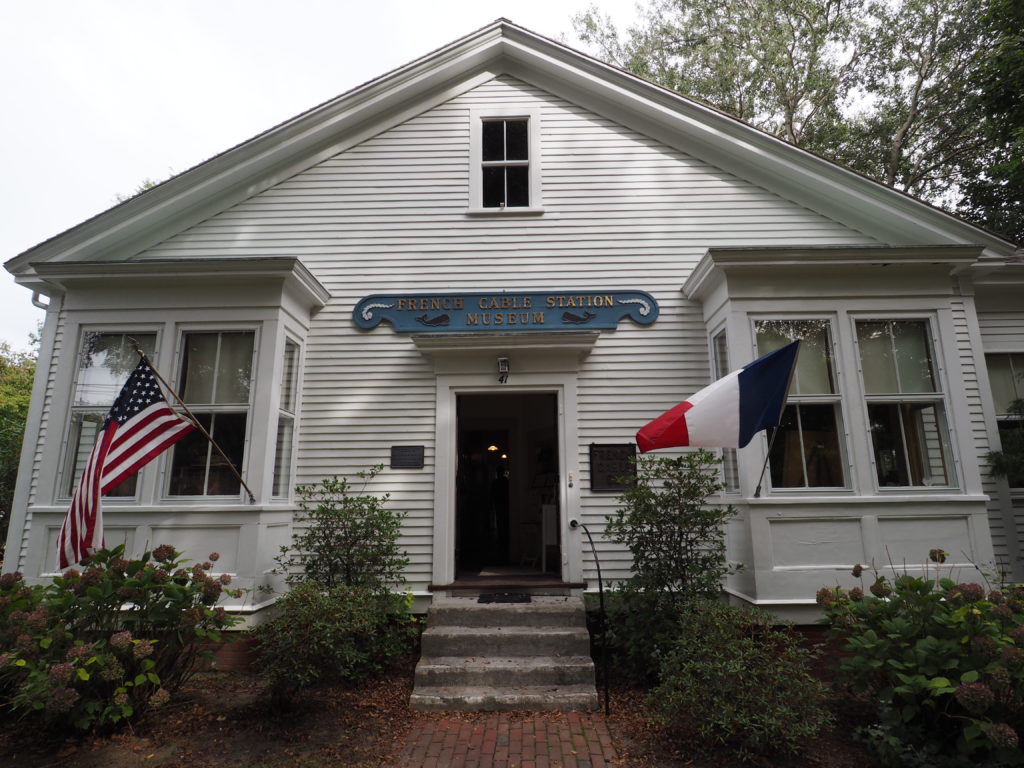
Named after the Duc d’Orleans following his brief visit to the Cape (and secession from Eastham), Orleans is also where the first undersea cable established rapid and reliable communications across the Atlantic.
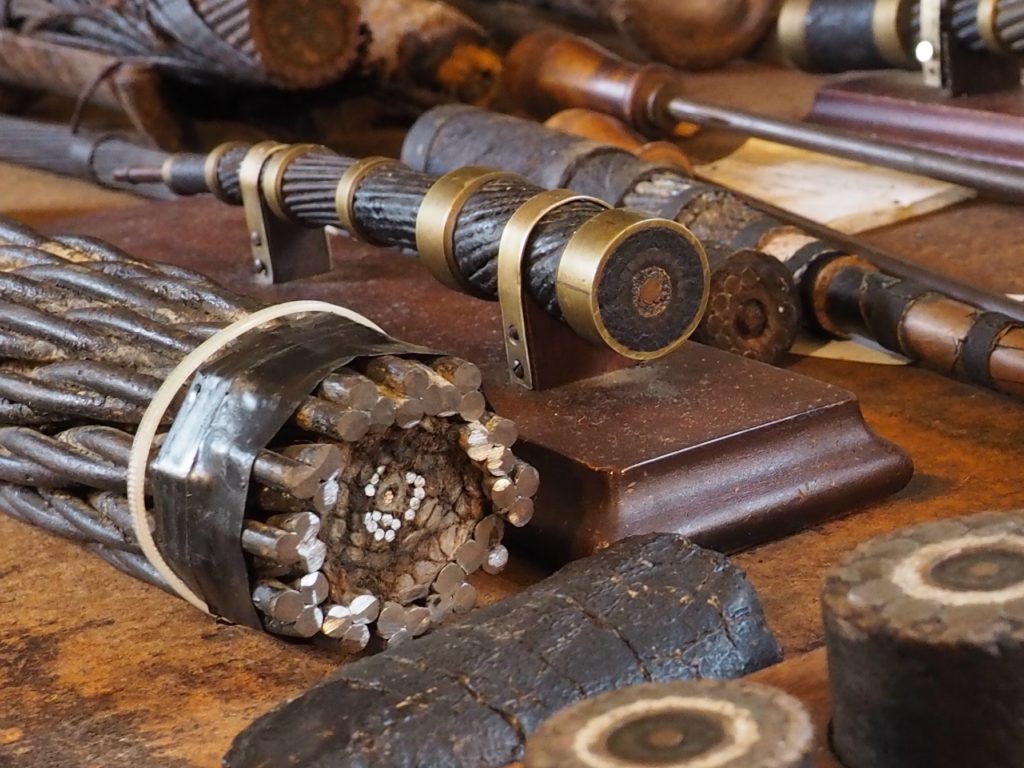
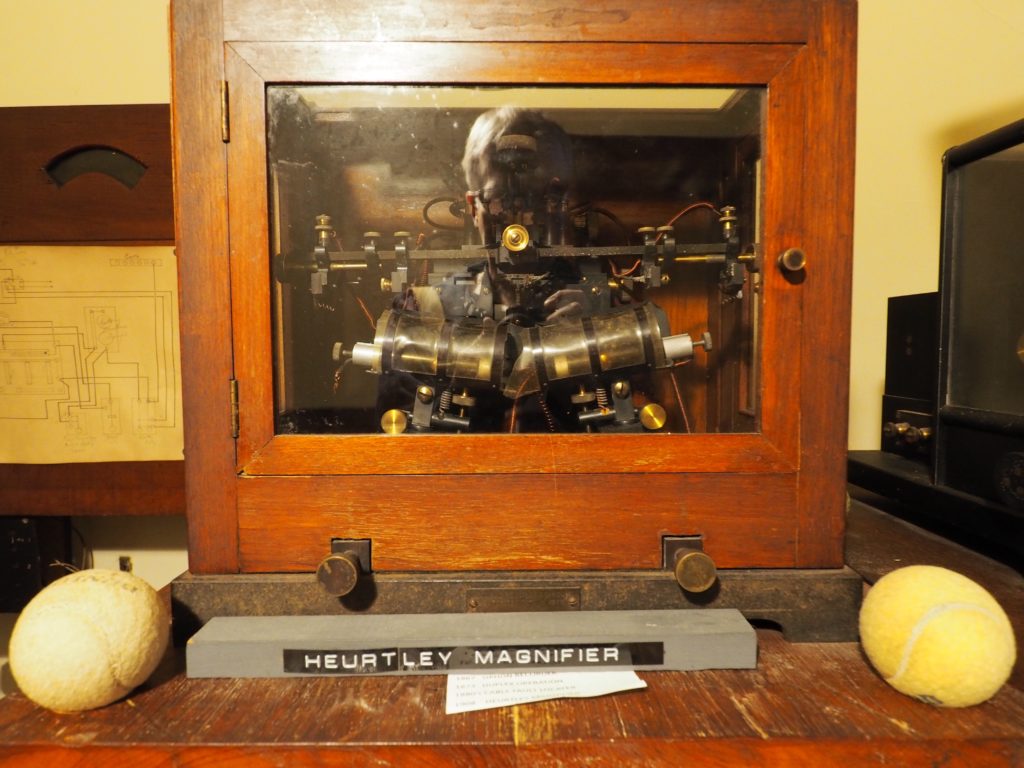
Admittedly a bit wonky-charming, the museum is housed in the building where the connection was made, is staffed by enthused volunteers and had, on the day we visited, an actual delegation from St. Pierre island off of Newfoundland visiting. St. Pierre is a self governing territory of France where the telegraph cable was routed through on its way to Orleans until it was run directly to Orleans in 1898. Of course, up the road in Wellfleet is where Marconi had one of his receiving arrays in the early days of wireless, high on a cliff. Sometimes it pays to be out to sea.
Atwood-Higgins
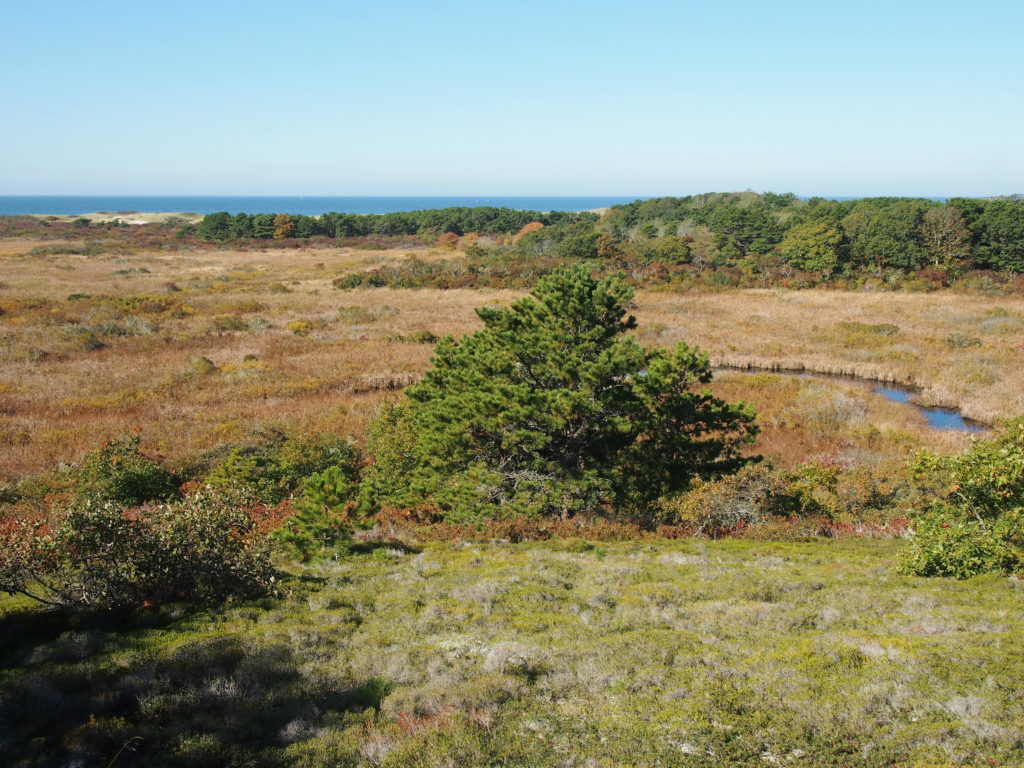
With all the controversy over geotagging, we do worry how long beautiful places can remain that way. This is the payoff of a glorious (and very hilly) walk in the National Park, preserved because it requires effort to get there.
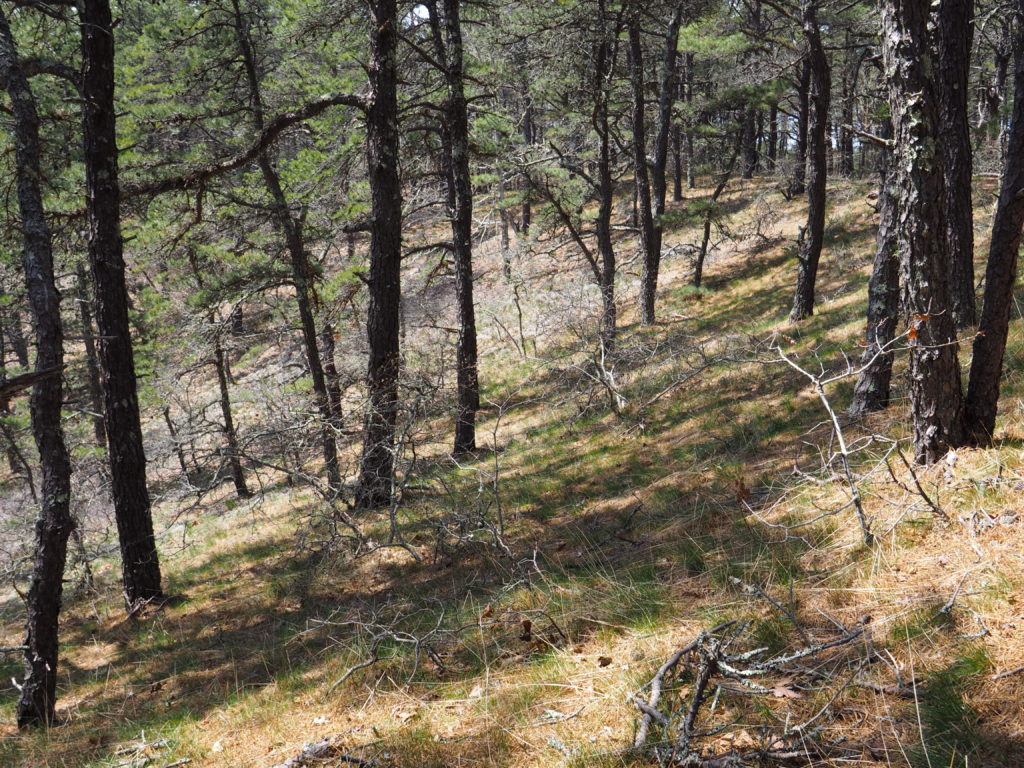
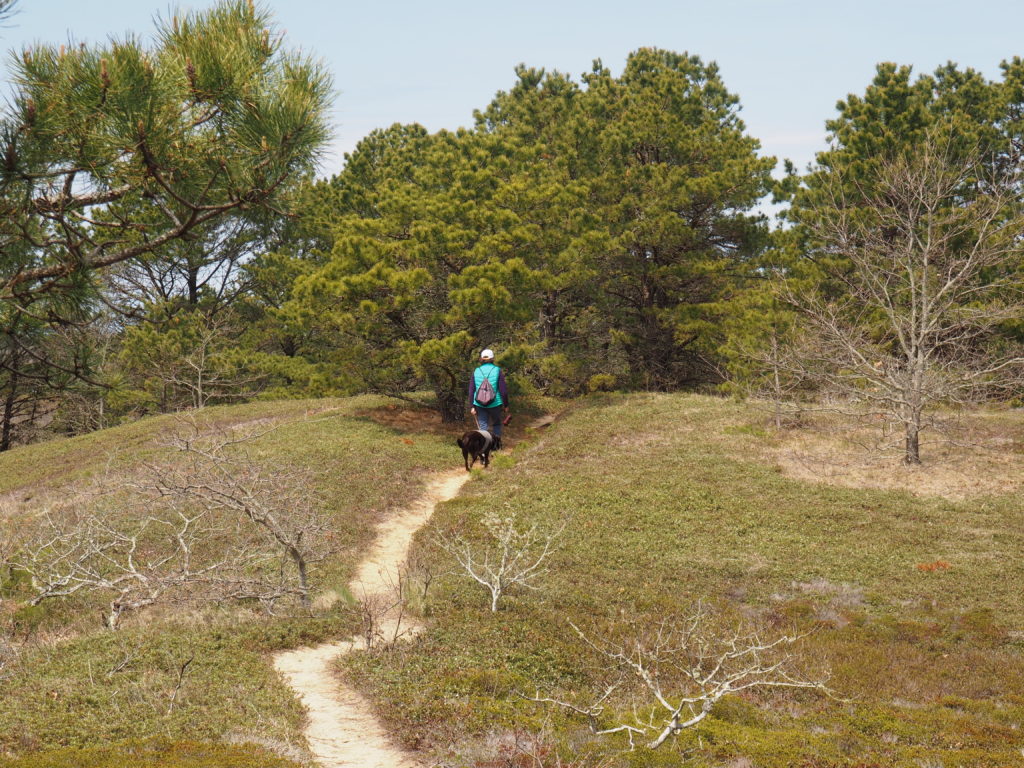

The Atwood-Higgins house dates back to when the surrounding land was an island, people remembered there’s a reason to build in a hollow, and the captain could moor his sloop just a few yards from the house. Rarely open (although well worth visiting) it’s the woods that draws us at least once a week.
Old Harbor U.S. Life Saving Station
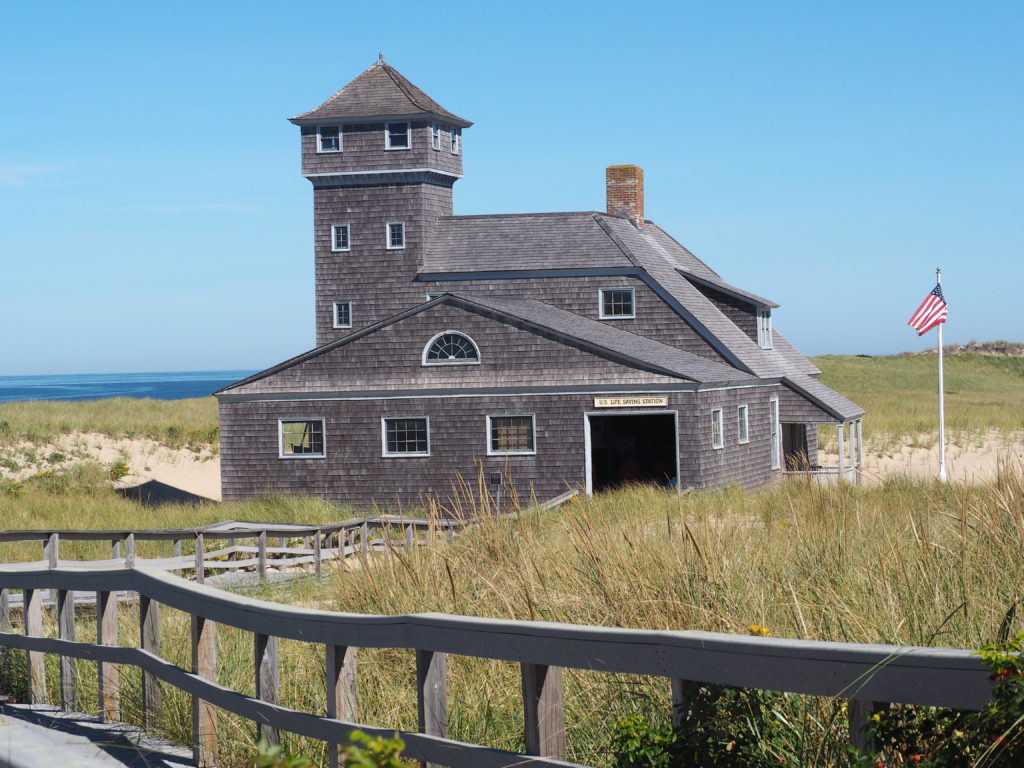
Built in 1897 in Chatham, the life saving station was rescued by the National Park Service in 1973, sawn in half and floated by barge to Provincetown where it presides at Race Point Beach.
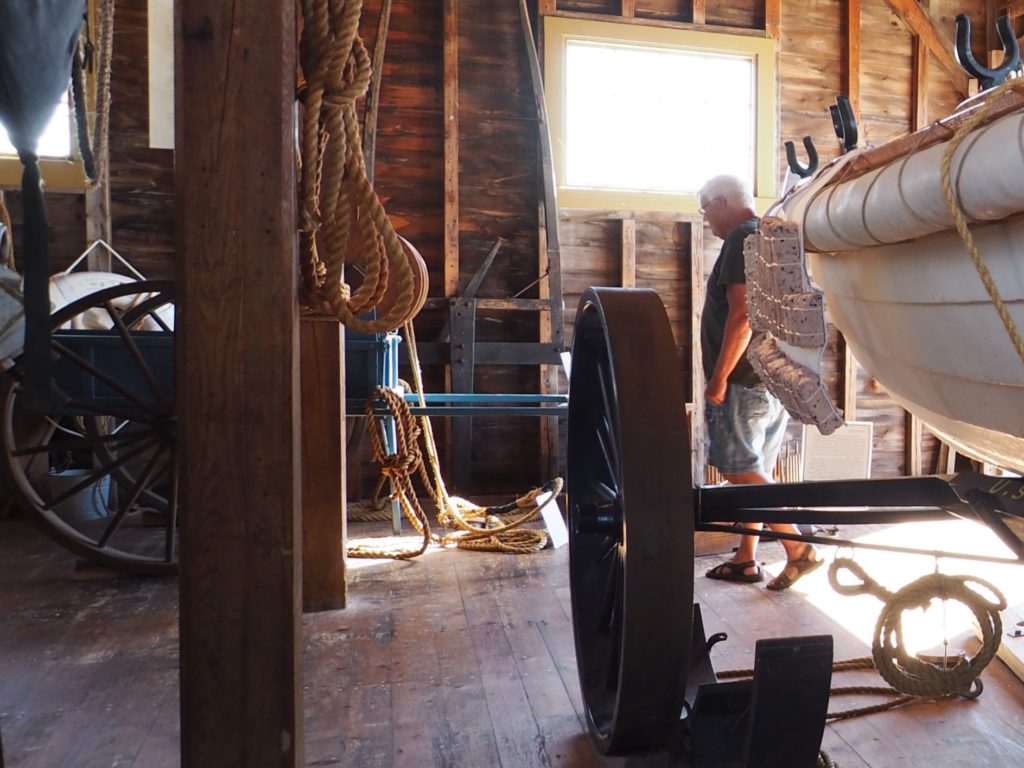
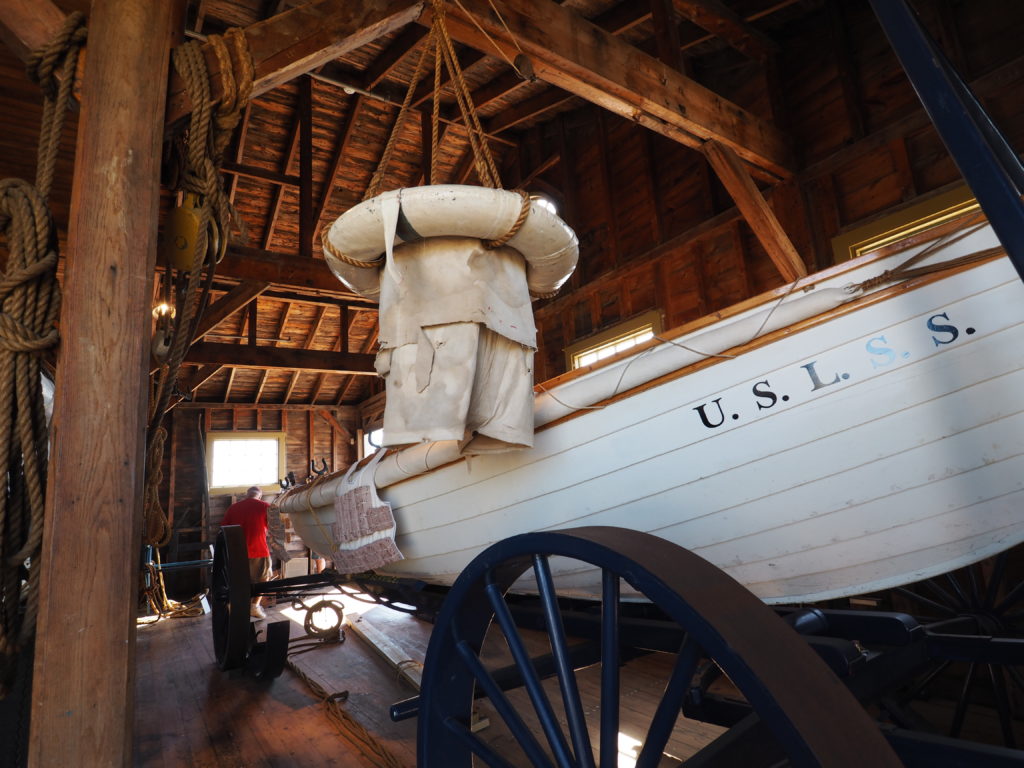
All up and down the Outer Cape the life saving service was extremely busy before the canal was built, as the passage around the Cape is exceptionally dangerous. Hiking in remote areas you can still come across the remains of old outposts.
The Provincetown Dunes
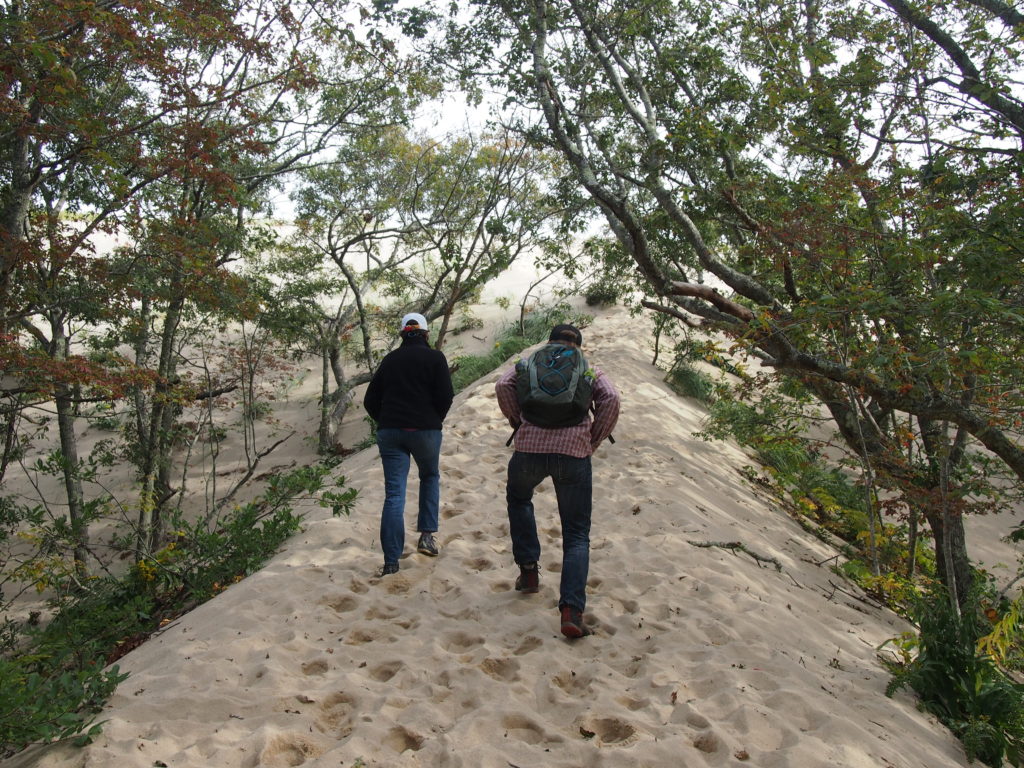
Much of Provincetown is part of the National Seashore. So, in addition to a colorful downtown jam packed with summertime tourists, it offers abundant nature, including whale watching (see our post on Looking for Whales from August of 2014), a dramatic beach forest and outstanding dunes.
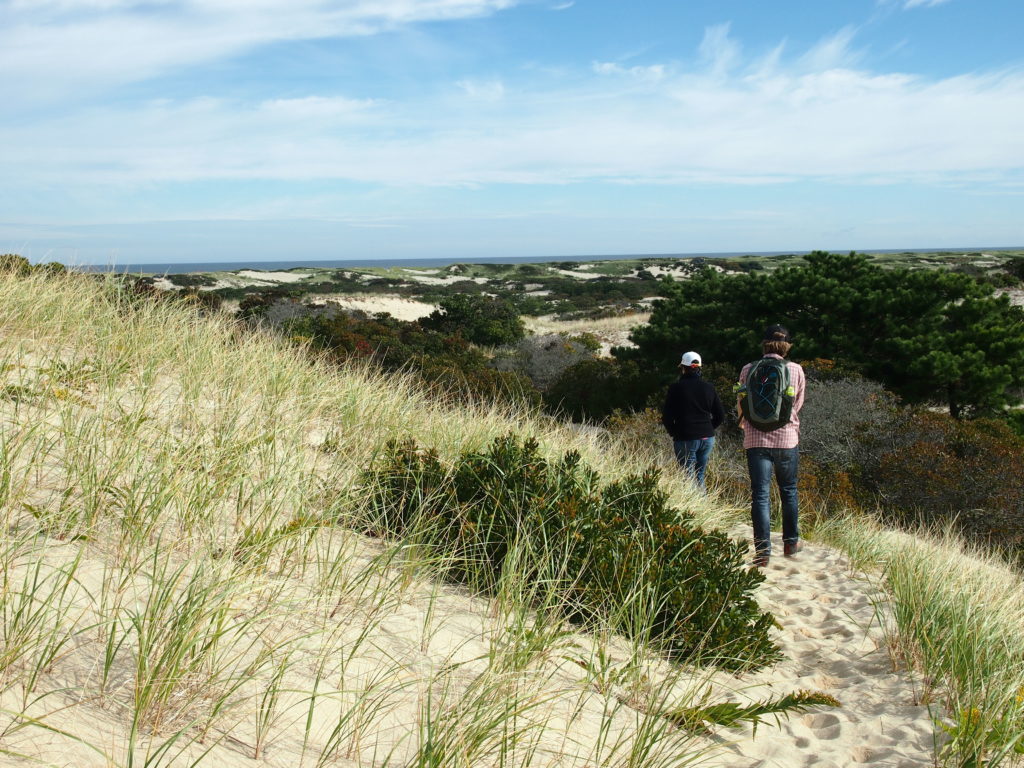
The hike from Route 6 out to the ocean can work up a sweat, especially in summer.
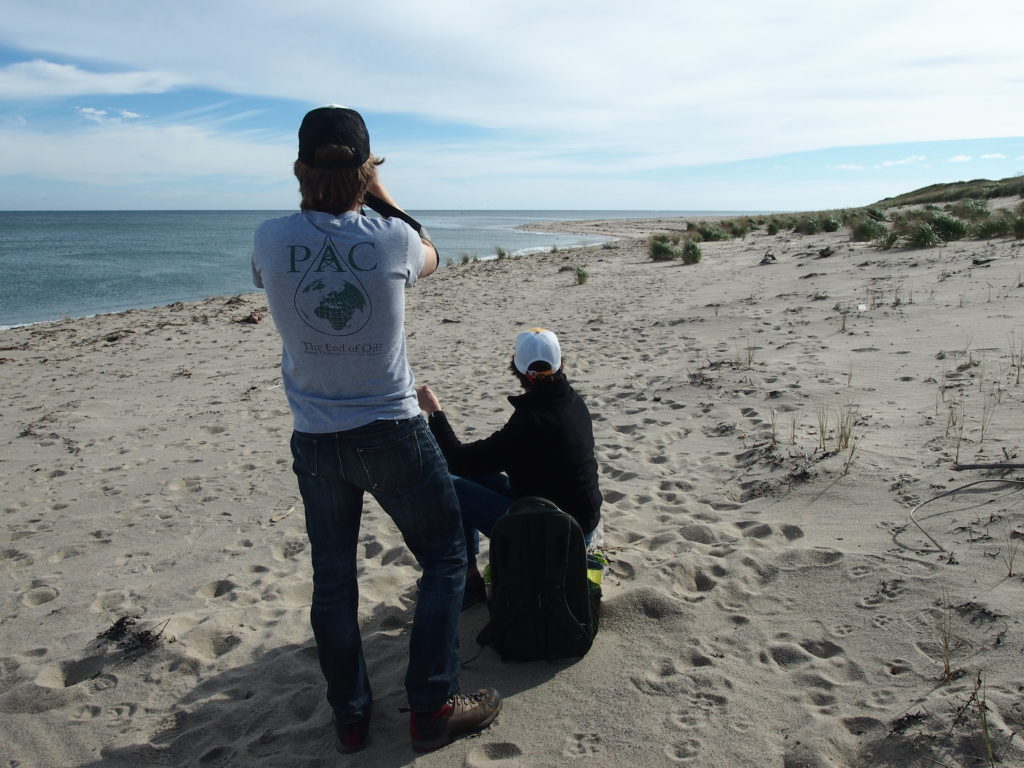


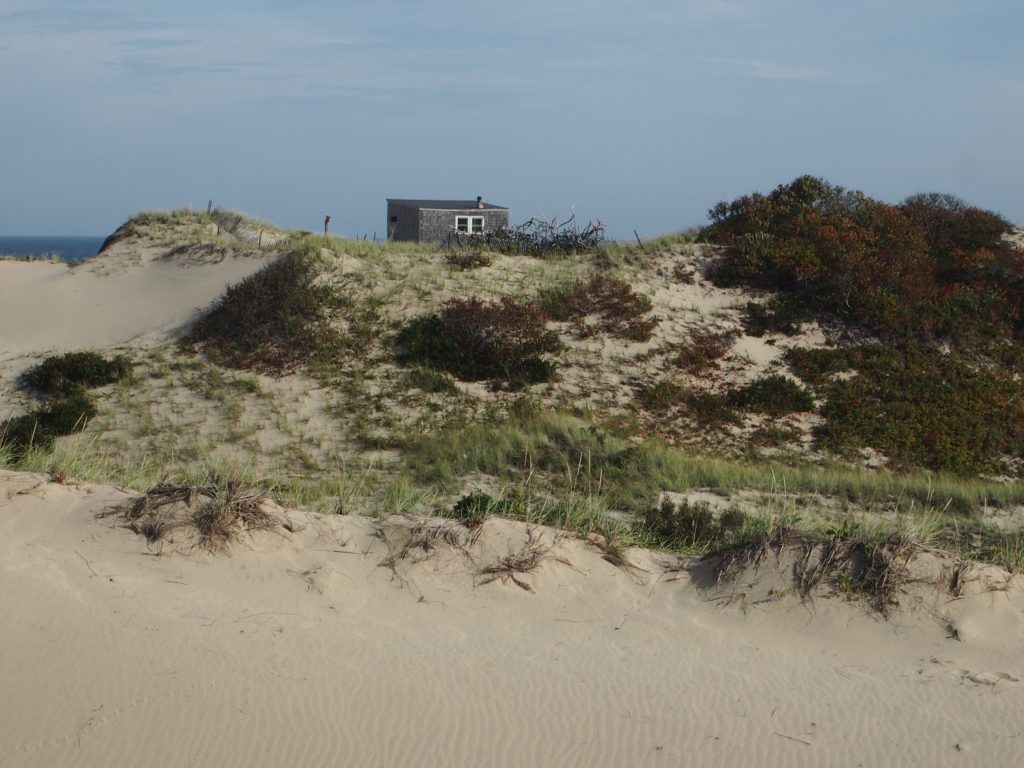
Spread through the dunes in Provincetown are old cottages, now owned by the Park Service, but leased to organizations that make them available as artist’s retreats. Definitely off the grid, vehicular access is tightly controlled.
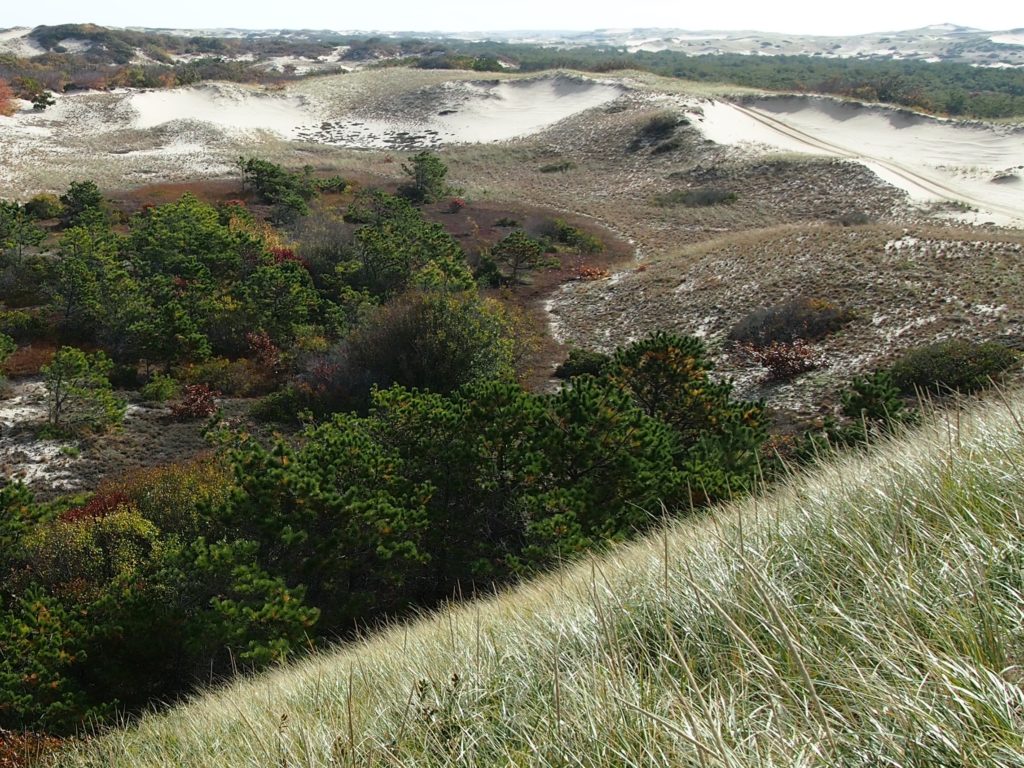
The changes in habitat within dunes are sometimes quite startling. It can be like coming upon a remote and hidden valley.

And, a Forest within the Dunes
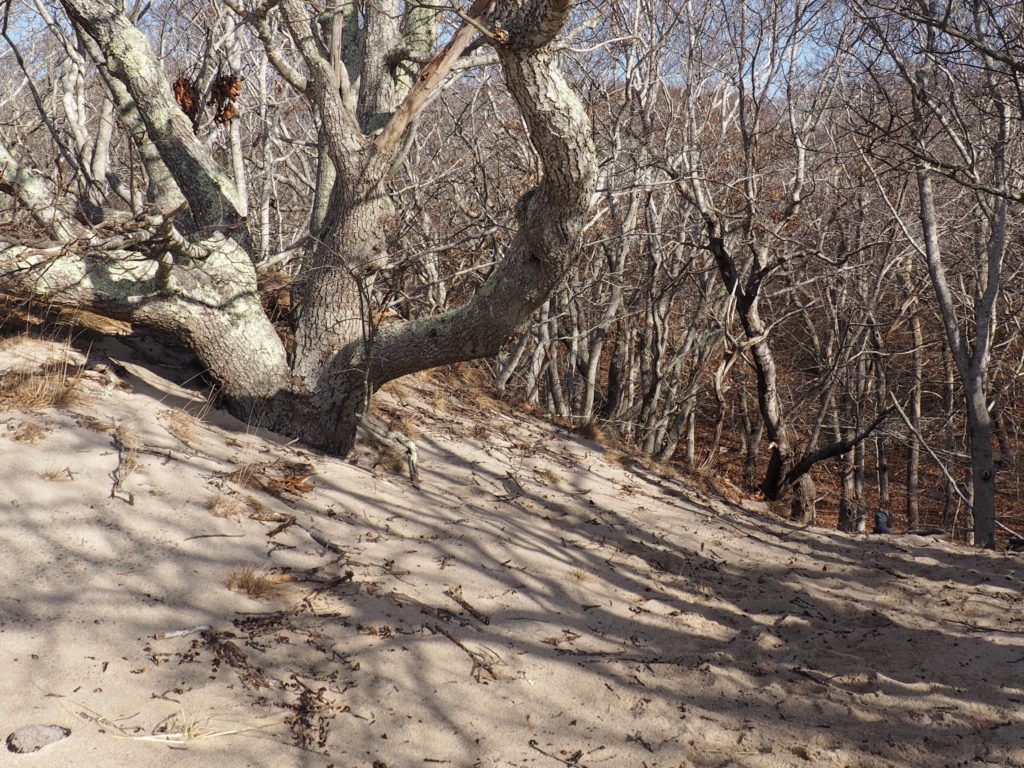
Nestled within the Provincetown dunes lies a beach forest well marked by the Park Service with trails through it and this steep climb up to an adjacent dune.

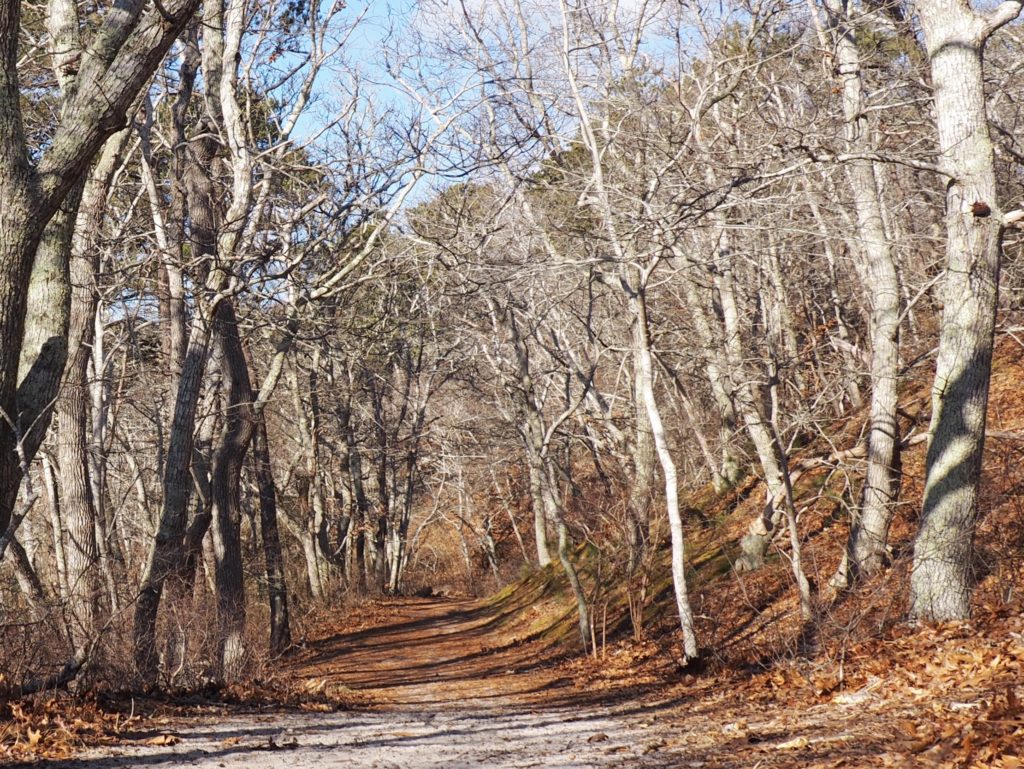
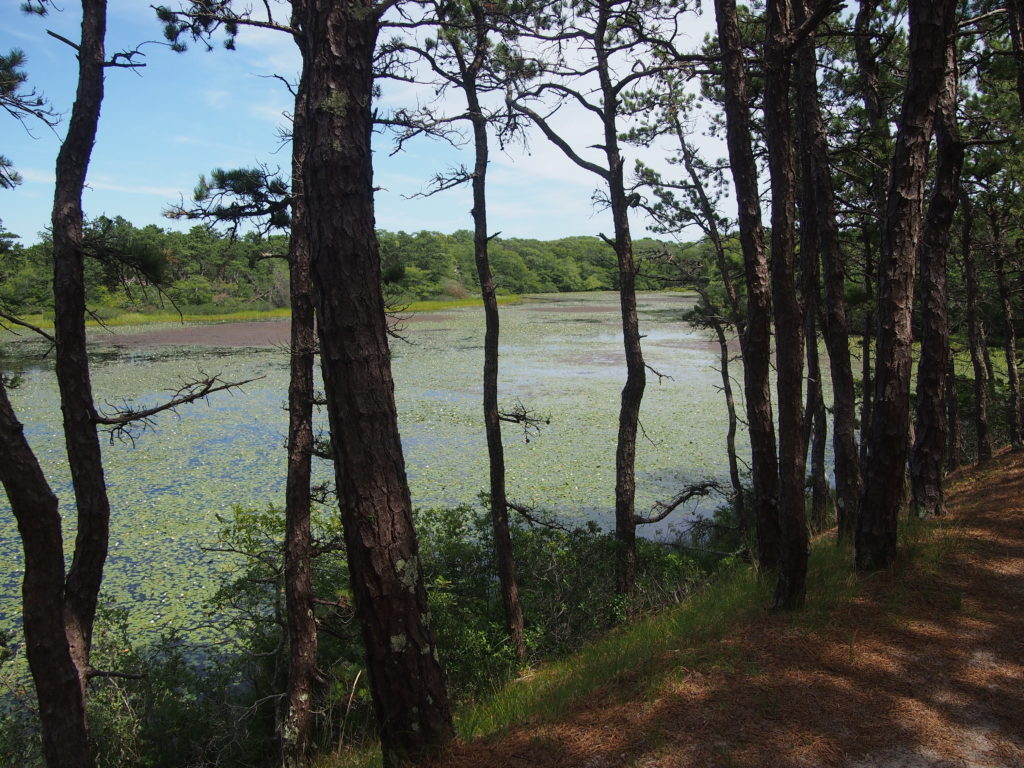
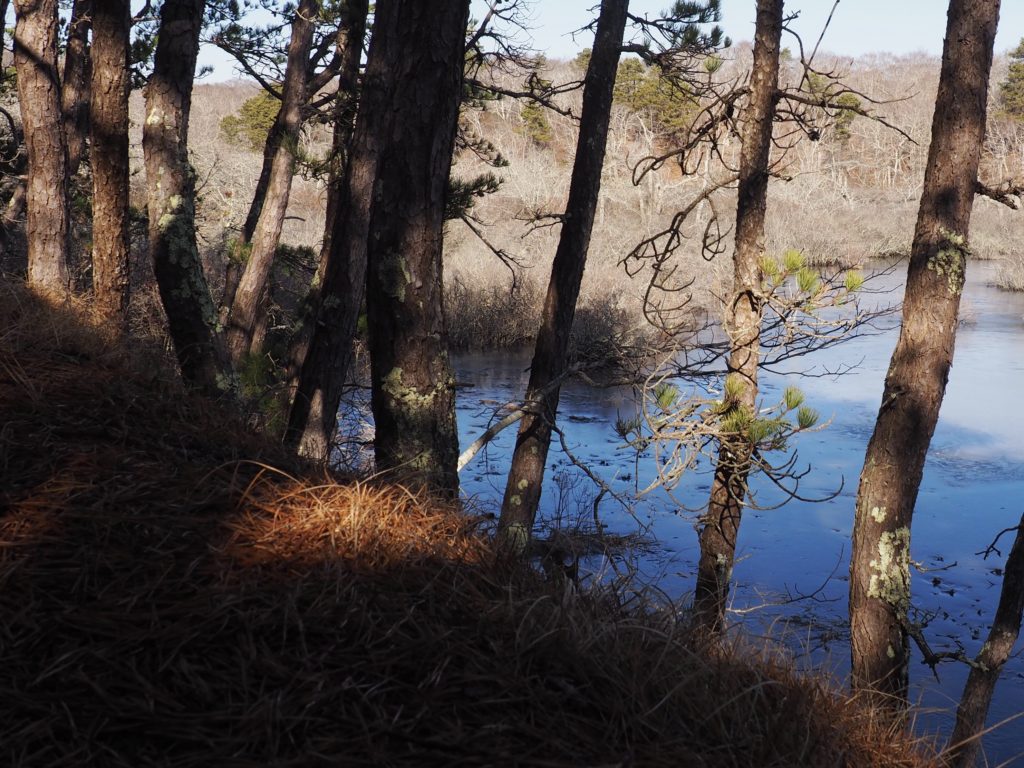
The Cape Cod Canal
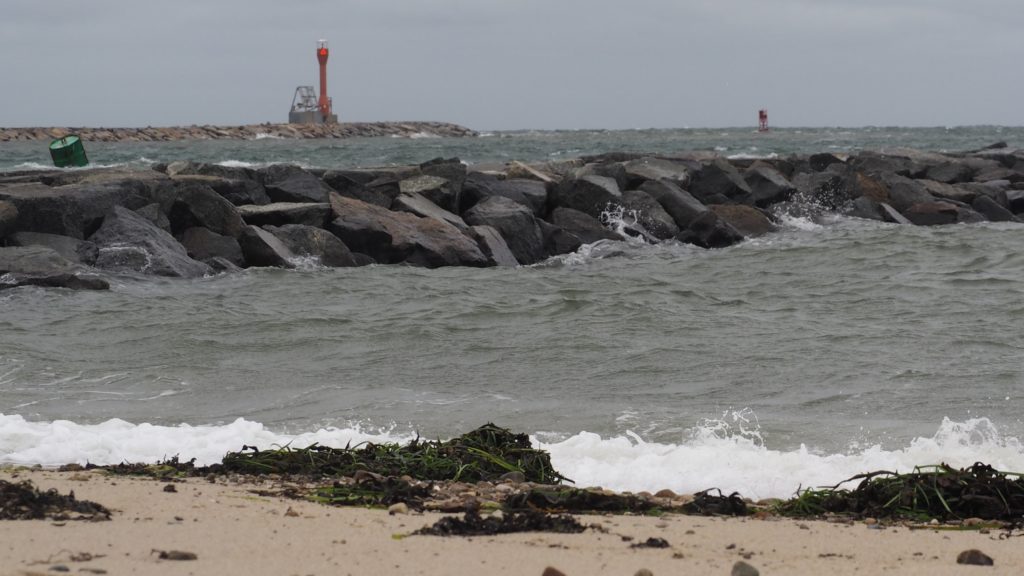
It was Myles Standish who first scouted a possible route for a canal to avoid the treacherous journey around Cape Cod, trade with the Dutch of New Netherlands and the Native Americans around Narragansett Bay being critical to paying off the Pilgrim’s debts.
For a time, a modestly safer route cut through what was known as Jeremiah’s Gutter, between what is now Orleans and Eastham by the rotary and the Stop and Shop (where they predict a bridge will be needed as waters continue to rise). It was used by smugglers, we’re told, up through the late 19th Century.
Alas, dreams came true (except for motorists) when a canal was at last completed in 1916. And, it’s a big one. 480 feet wide, 32 feet deep at mean low tide, and seven miles long. It would take a lot to fill it in, as some propose. But, that would mean a longer trip around for everyone who’s waterborne, including the whales and porpoises who have also gotten used to the shortcut.
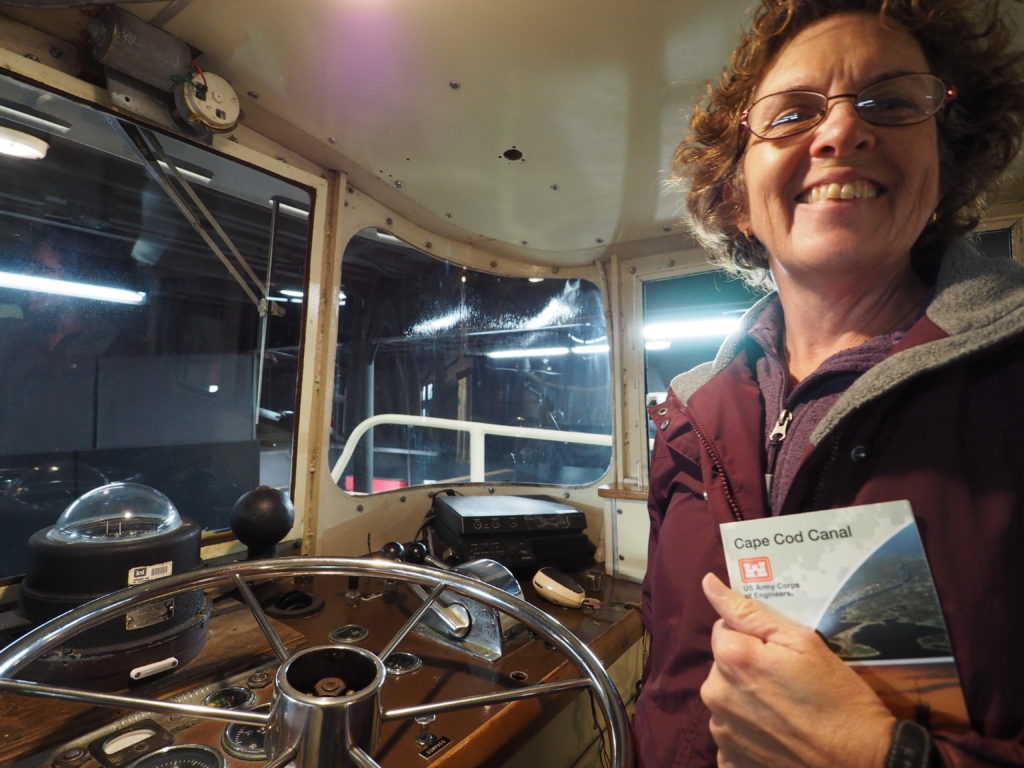
The US Army Corps of Engineers not only maintains the canal, the have a rather nice little museum complete with boats in climb around in.

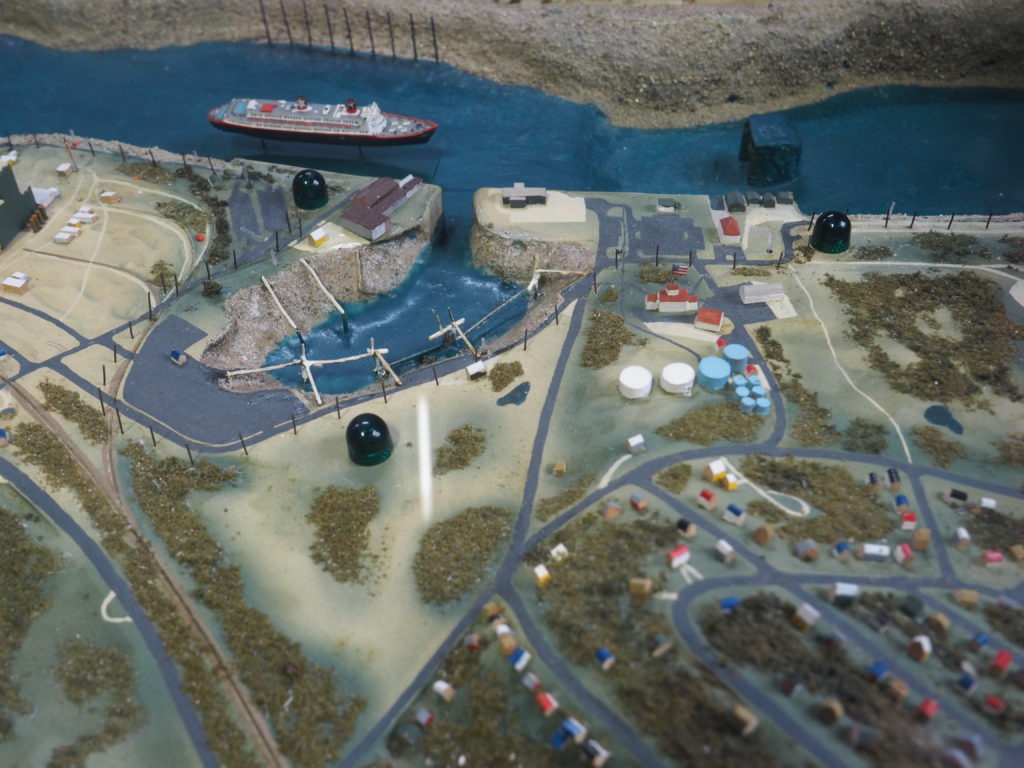
And, who can resist a rather well done model. (Takes us back to the days of train tables and trying to keep them from constantly derailing.)
The Hoxie House
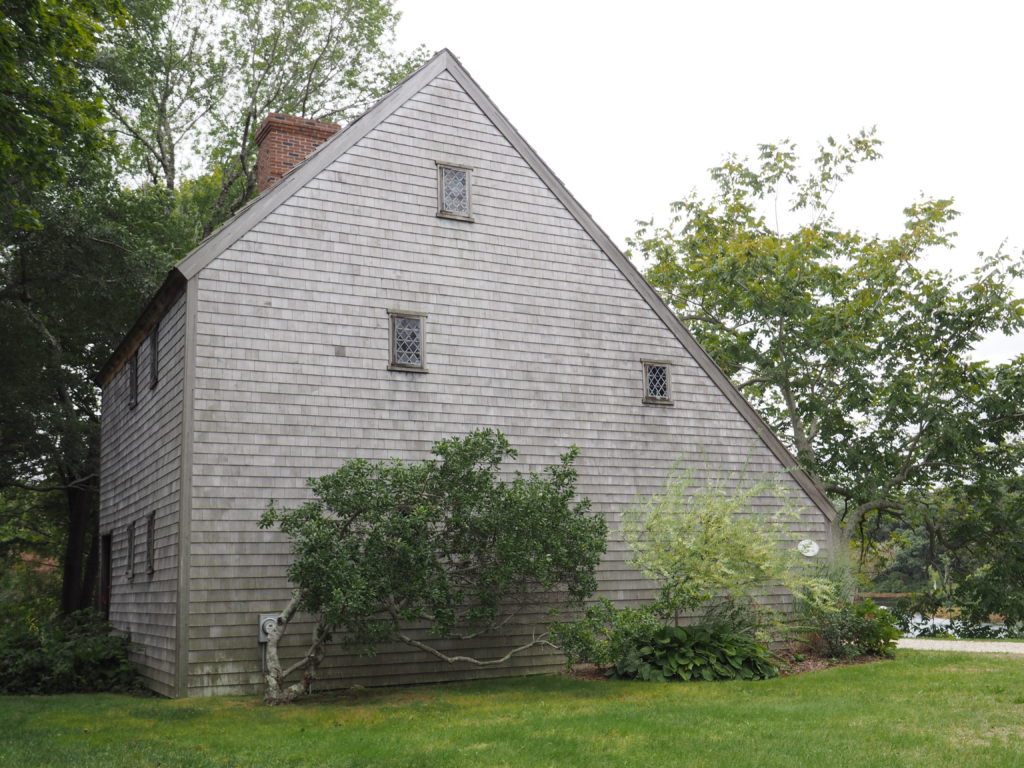
There are those little museums, often house museums, that don’t seem that special until you go inside and start to look around and listen to what the docents have to say. The Hoxie House is one of those.
Abraham Hoxie wasn’t the first one to live in this salt box cottage. A whaling captain, he didn’t move in until the middle of the nineteenth century.
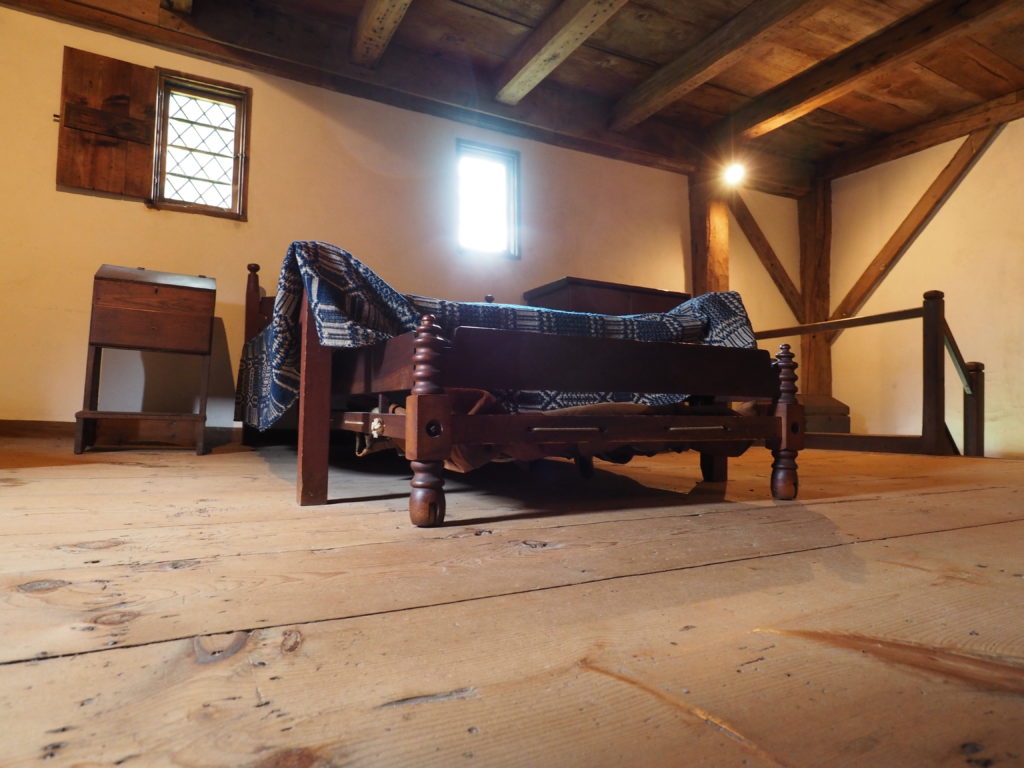
The first known occupant was the Reverend John Smith, along with his wife and 13 children, who was the pastor of the First Church of Sandwich from 1673 until 1689. It was a Separatist congregation. Smith was also a member of the legislature and was known for advocating tolerance of those irritating Quakers. They moved into the house around 1675.
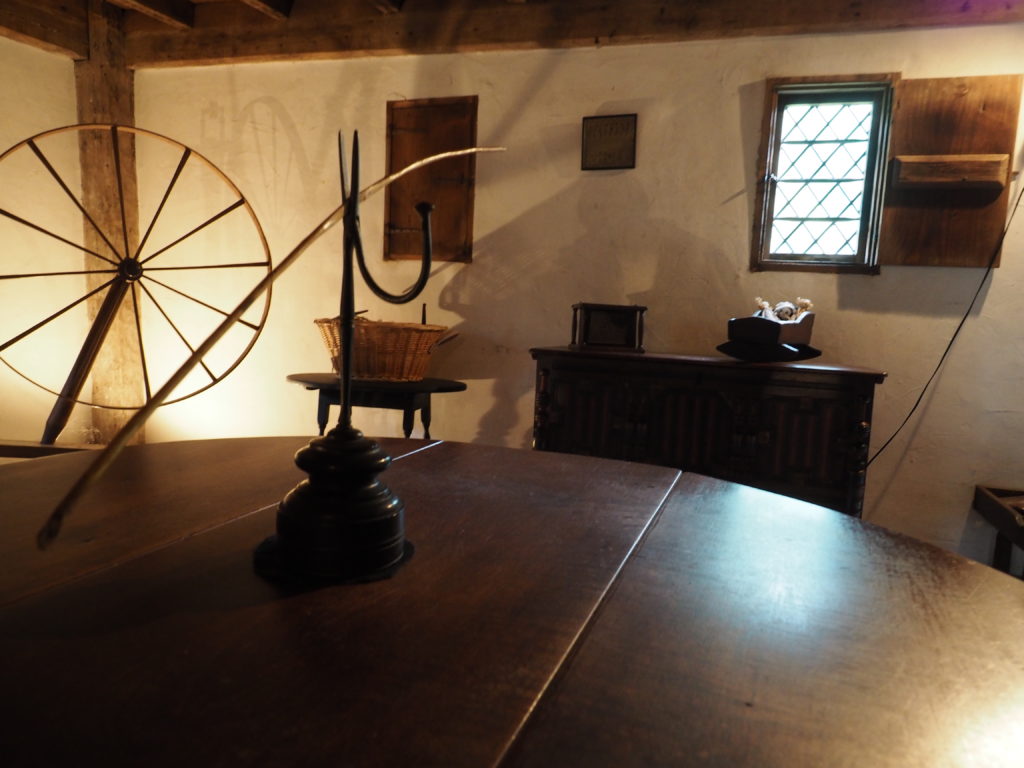
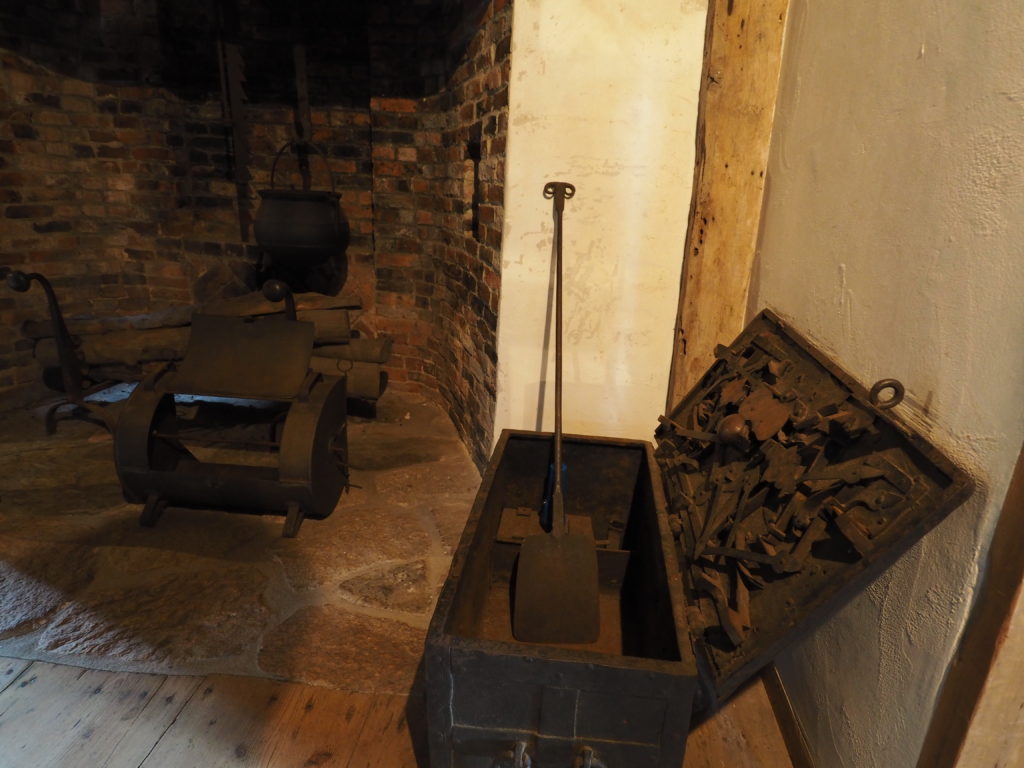
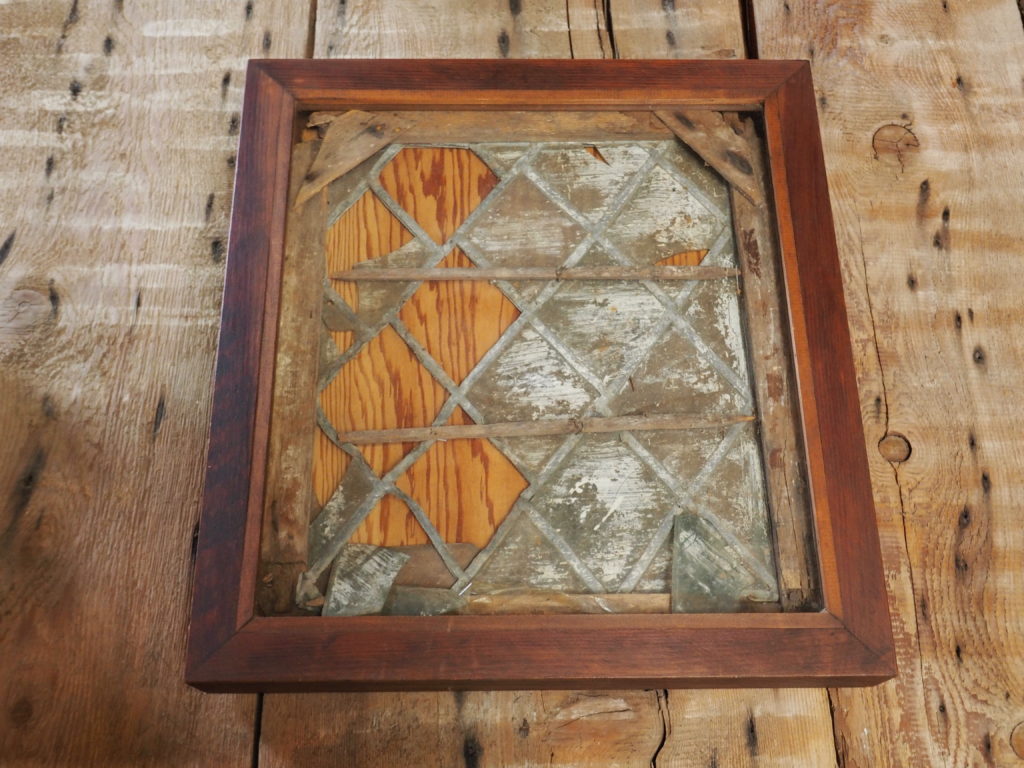
Until the house was purchased by the Town in the early 1950s, it had no electricity, no central heating and no indoor plumbing. (We suppose that isn’t saying much since Jim remembers when his grandparents put in indoor plumbing, also in the 1950s, although they did have electricity and central heat.)
What makes a place like the Hoxie House, of course, are the stories, including the ones we always love to be horrified by, like the old custom of putting bell pulls inside coffins – just in case.
Cape Cod Maritime Museum
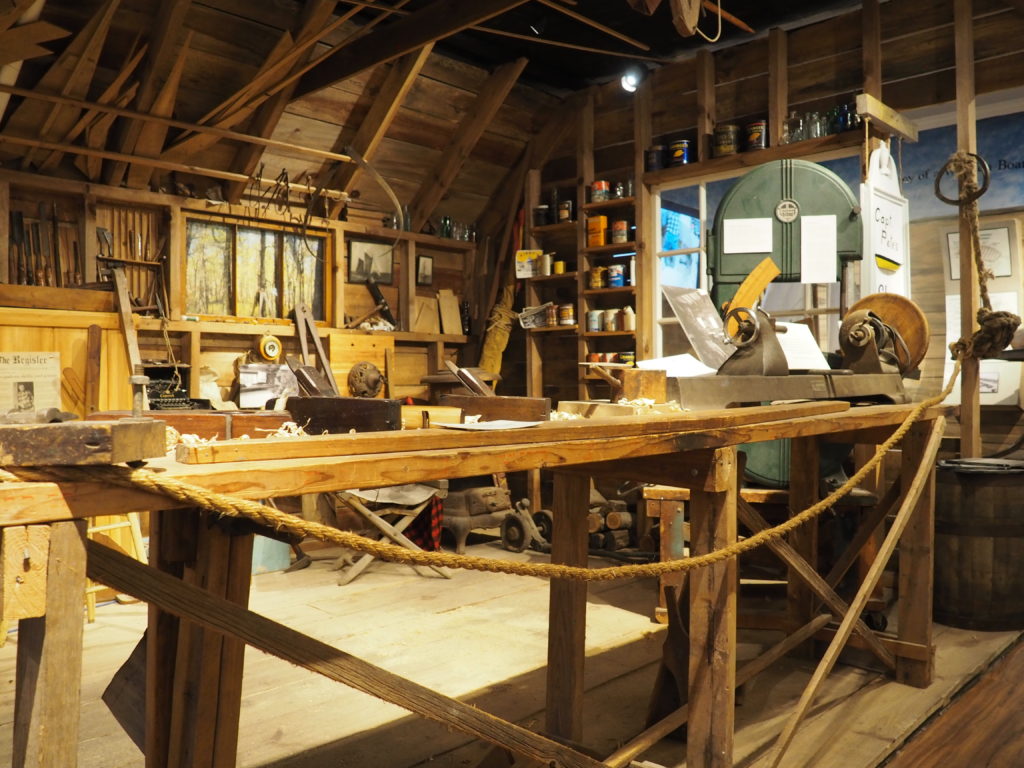
This museum may be small, but it has plenty of personality. From workshops and classes for beginning boat builders to a boat shed of interesting small boats.
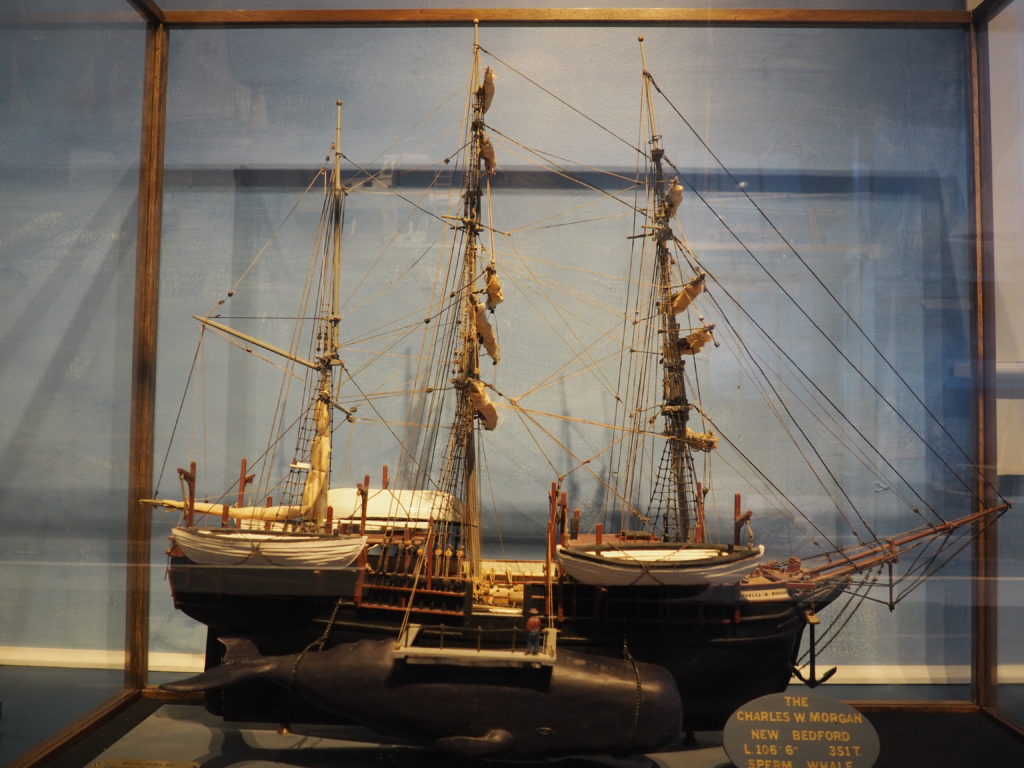
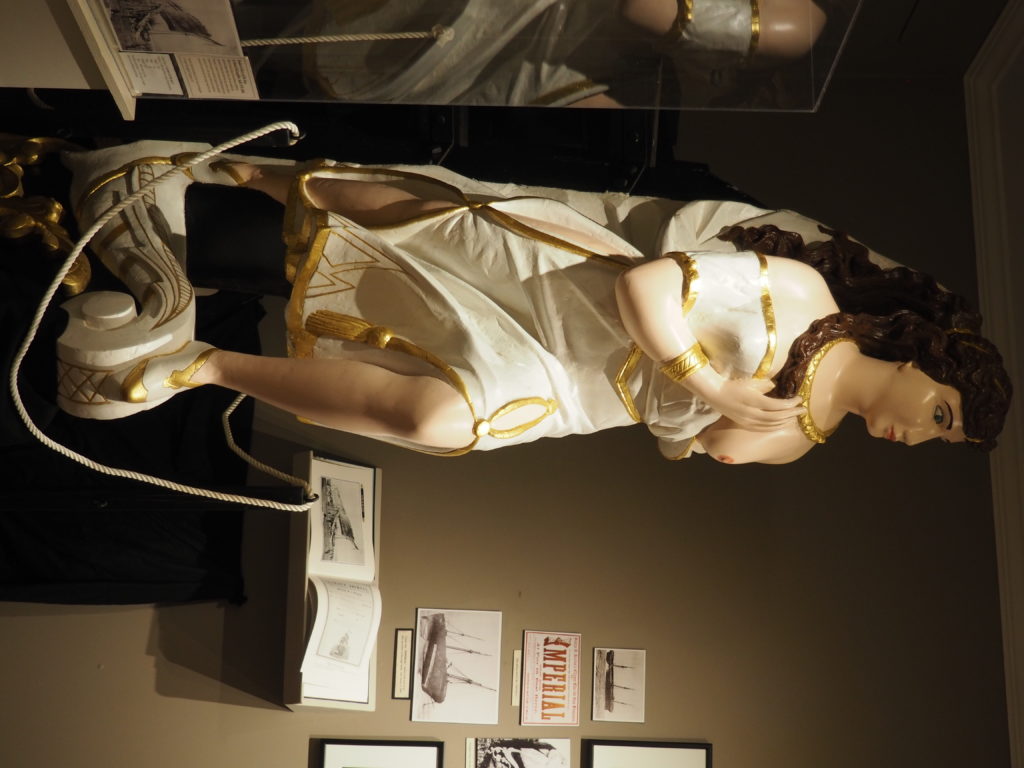
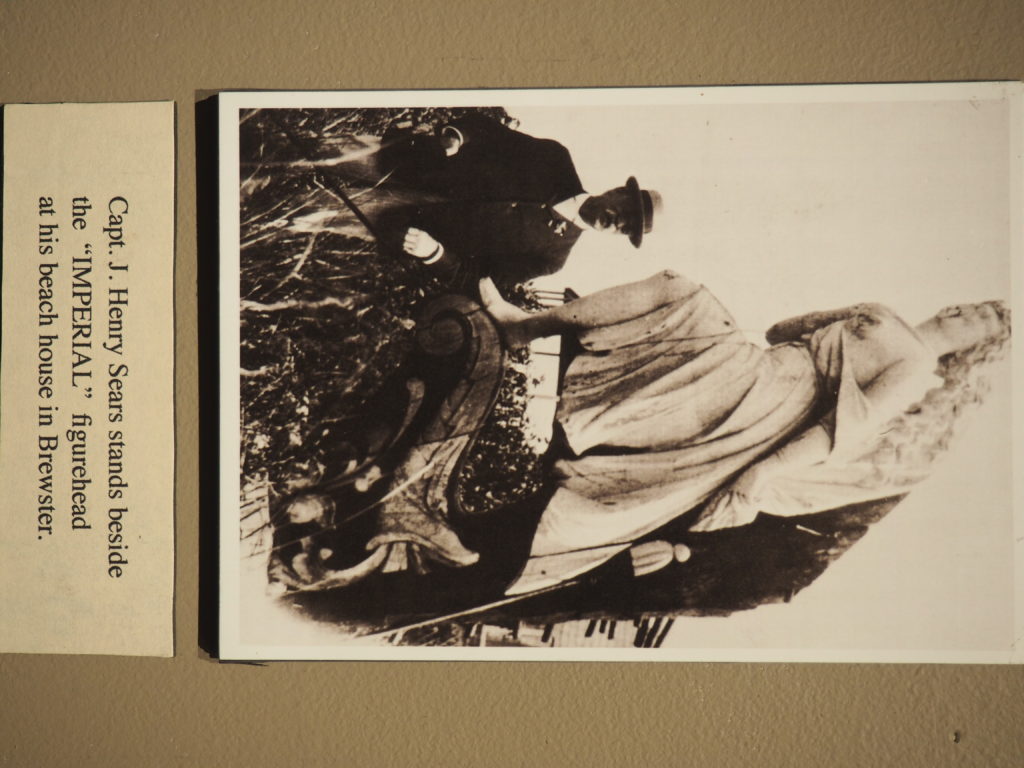
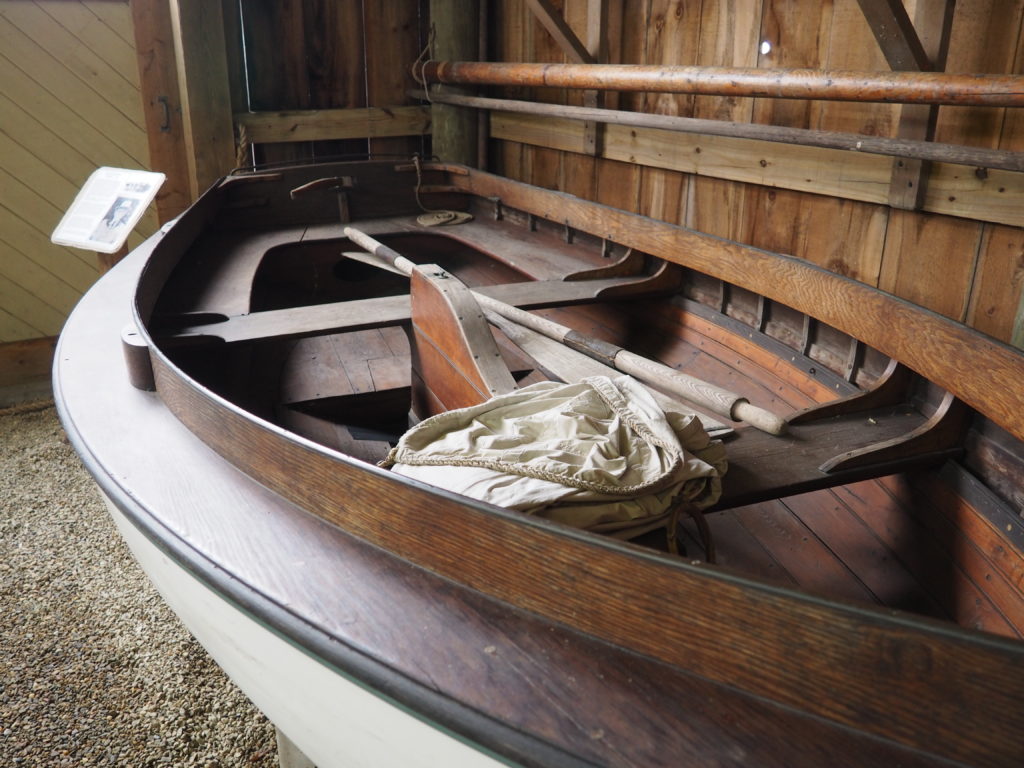
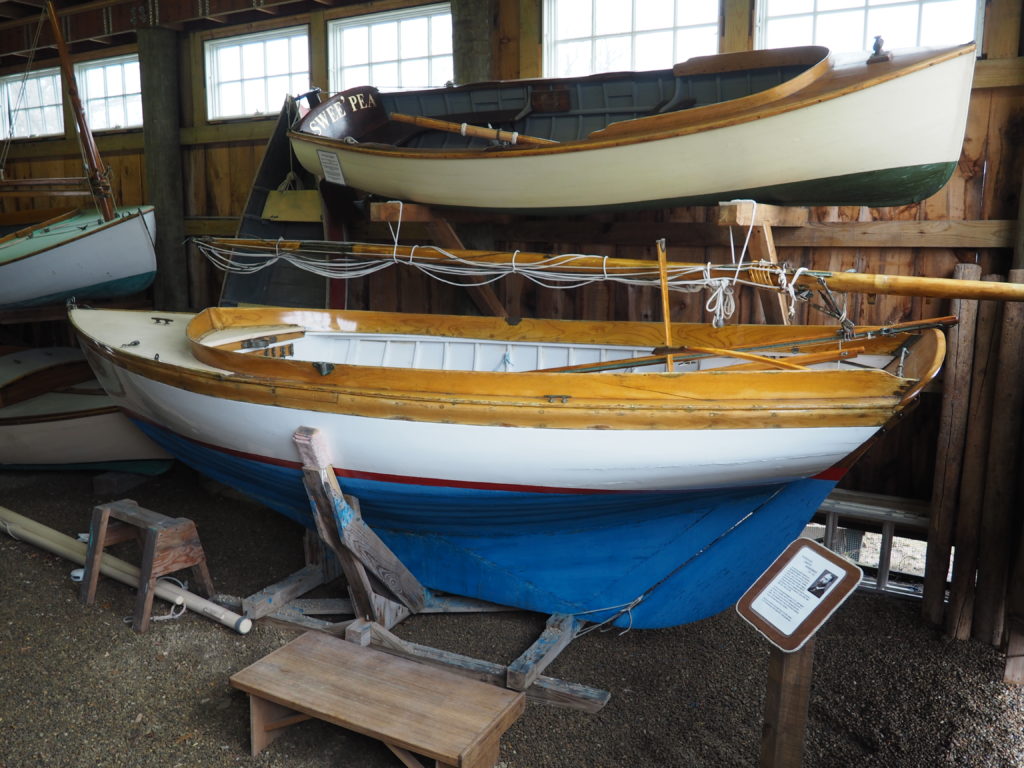
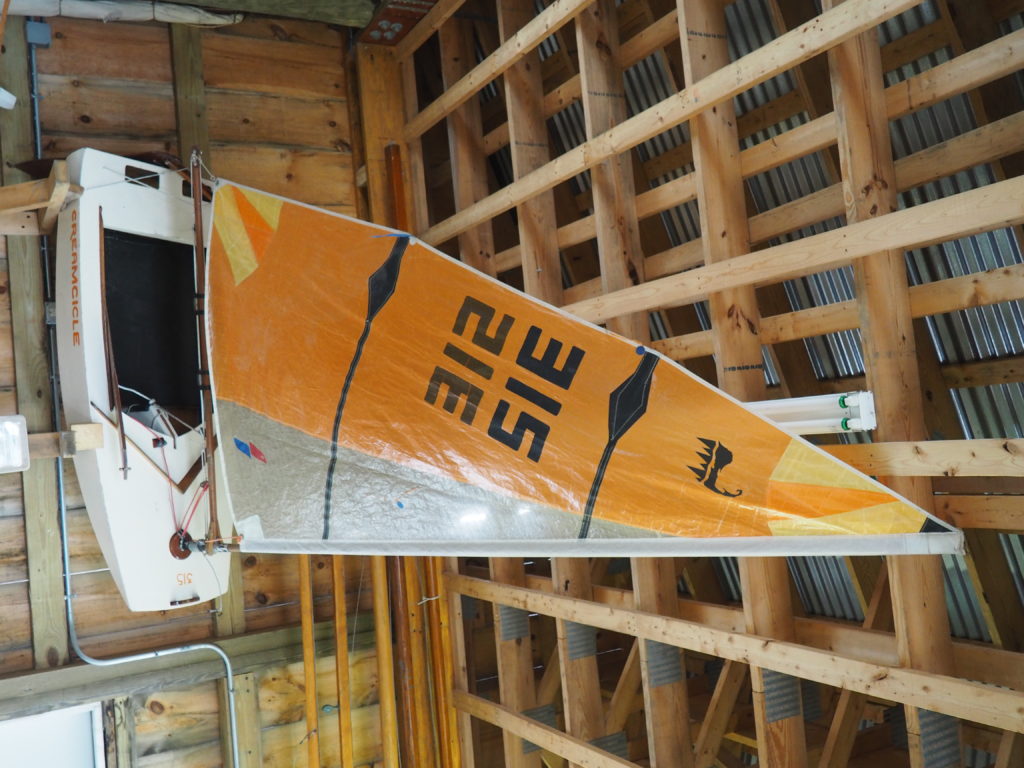
This seems like a good place to put in a plug for another museum, but one that doesn’t allow photography. We were surprised at how interesting and engaging the Whydah Pirate Museum is. The collection is primarily from the underwater archeology undertaken by the organization to recover artifacts from, you got it, a sunken pirate ship. It’s all about pirates, the lives they lived and the treasure they acquired by unlawful means. In a back room of the museum you can even talk with an archeologist as she works on restoring recovered artifacts. Truly fascinating and very well organized and presented.
World’s End
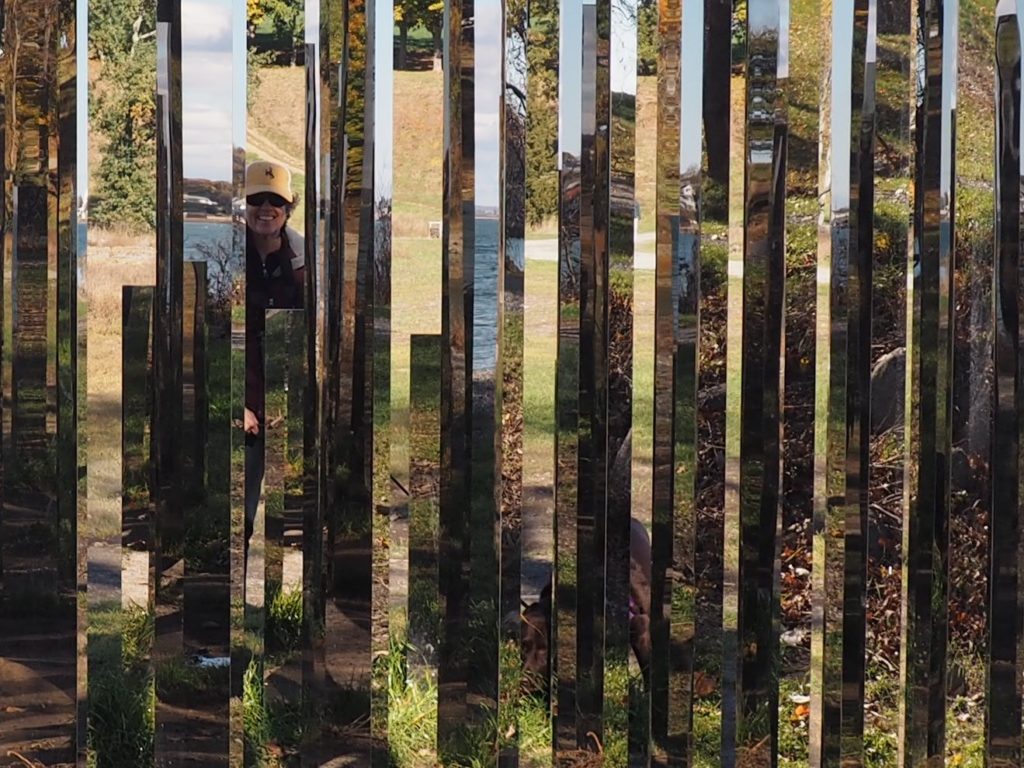
World’s End is about as far away as we can justify in talking about Cape Cod. It isn’t on Cape Cod, with or without taking into account the canal. However, being in Hingham, it’s an easy day trip. So there you are.

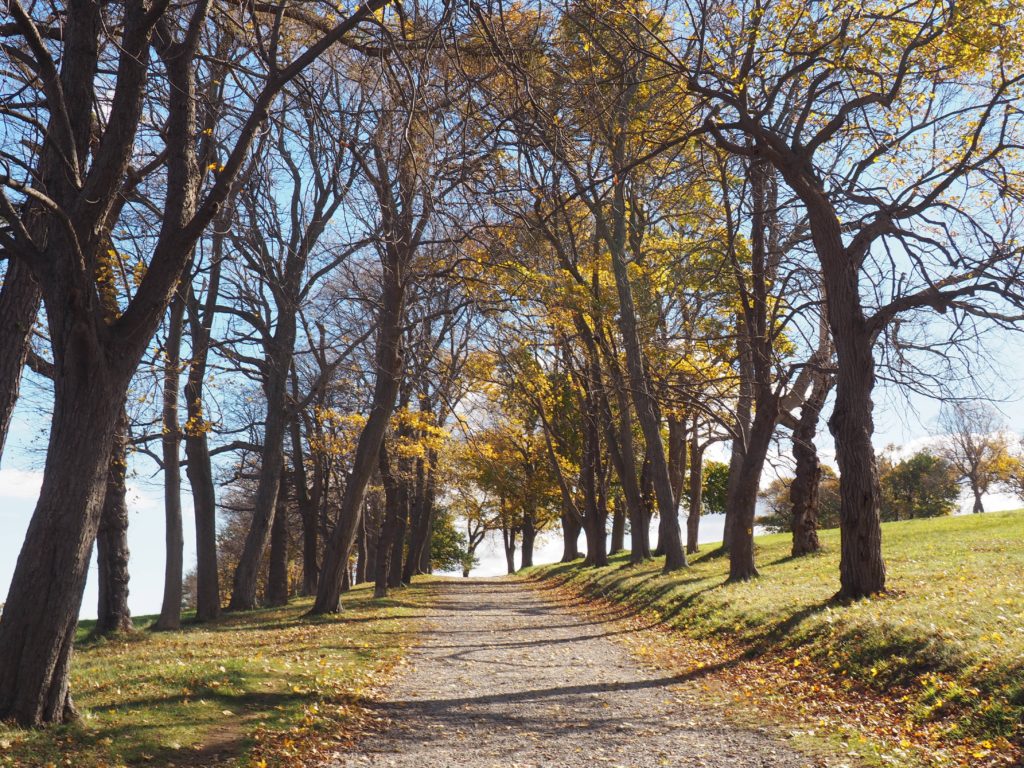
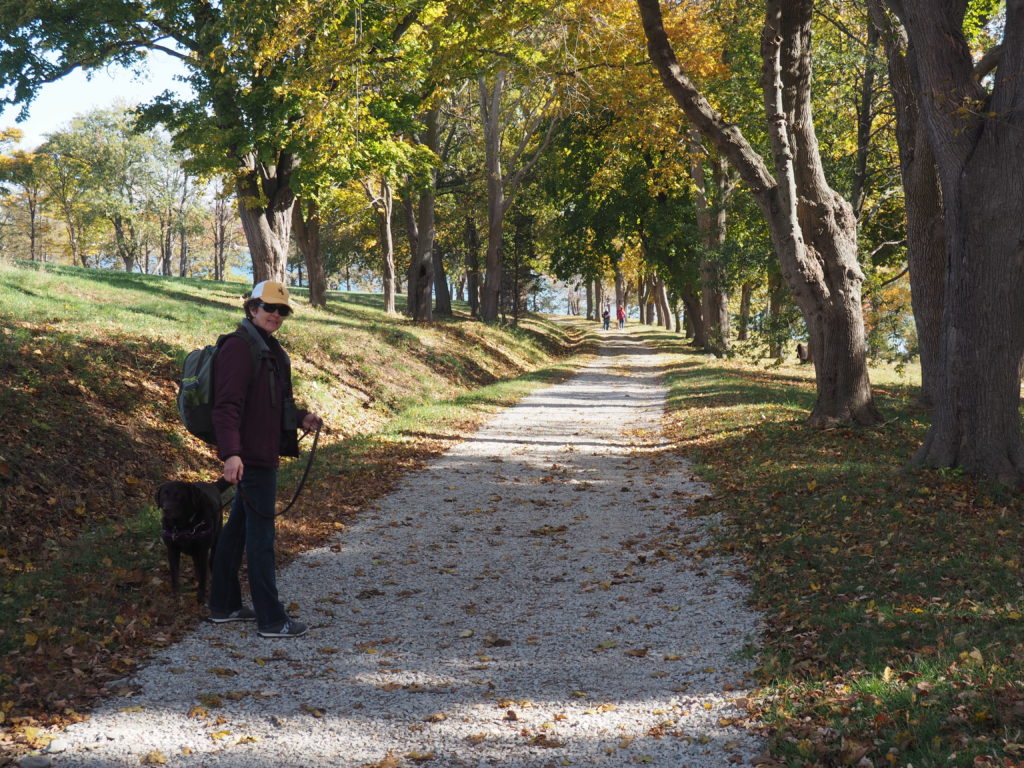
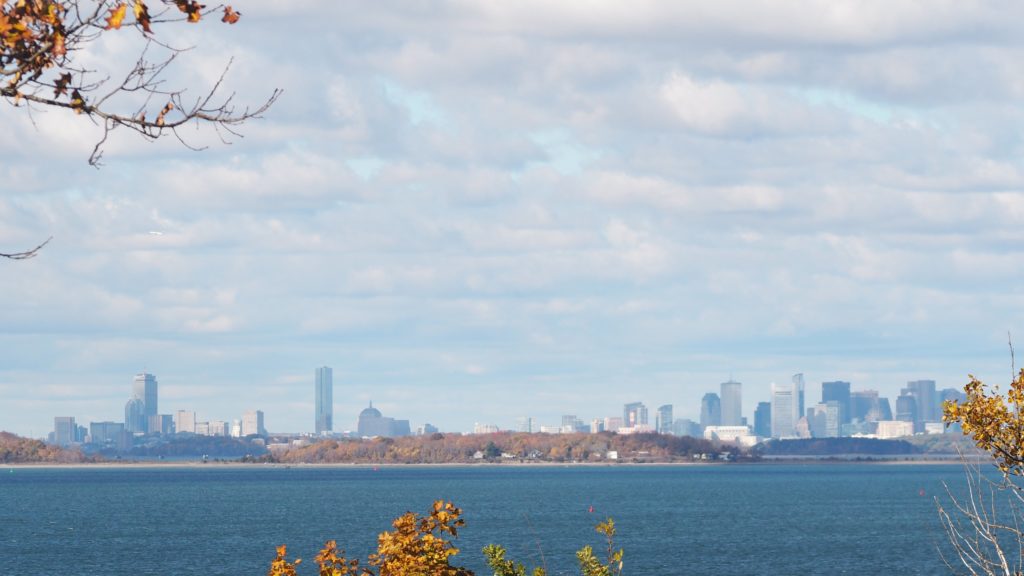
Plimouth Plantation
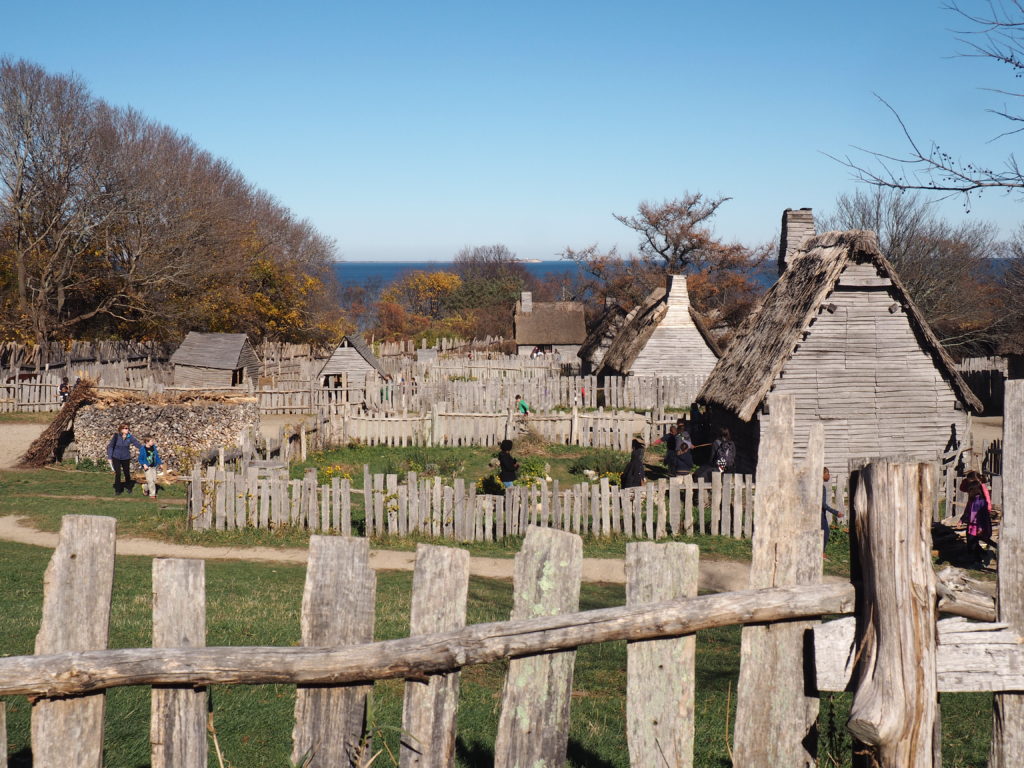
Okay, fair enough, we fully acknowledge that this is not Cape Cod. However, our excuse is again that it’s not far away and there is a very solid connection to not only the Cape, but to Eastham in particular. You see, Eastham was founded by folks who found the life of Plimouth to be a bit constricting and returned to where they had first made landfall and contact with the Native Americans. Both communities are preparing for the onslaught of Mayflower descendants celebrating the 400th anniversary of 1620.
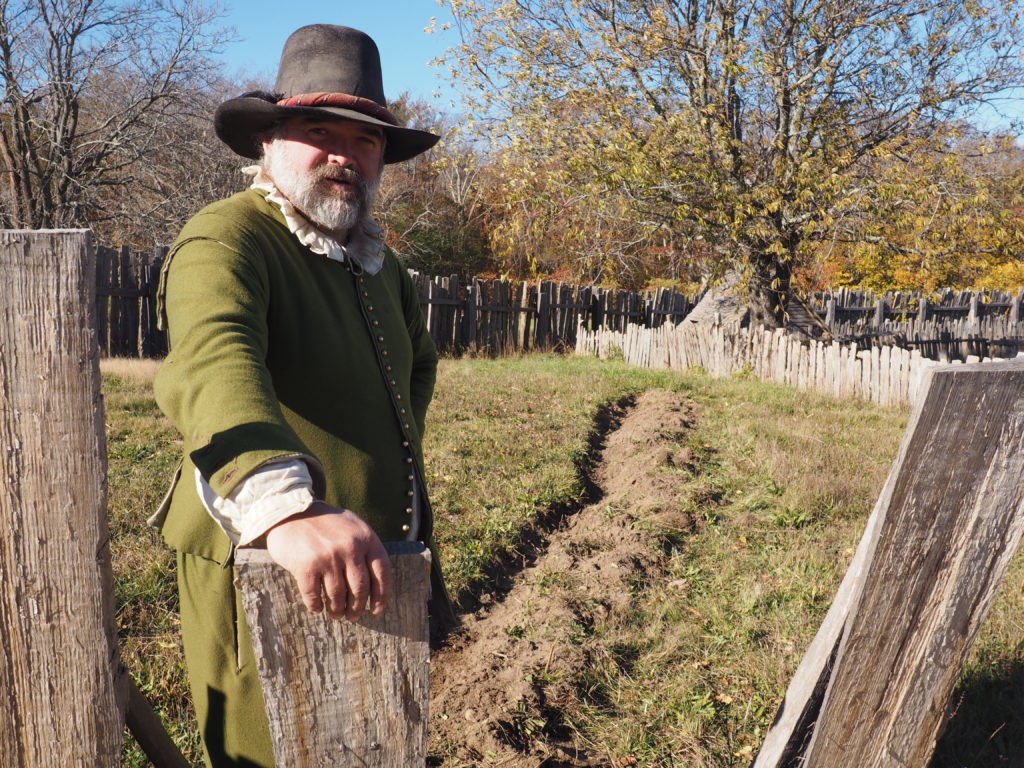
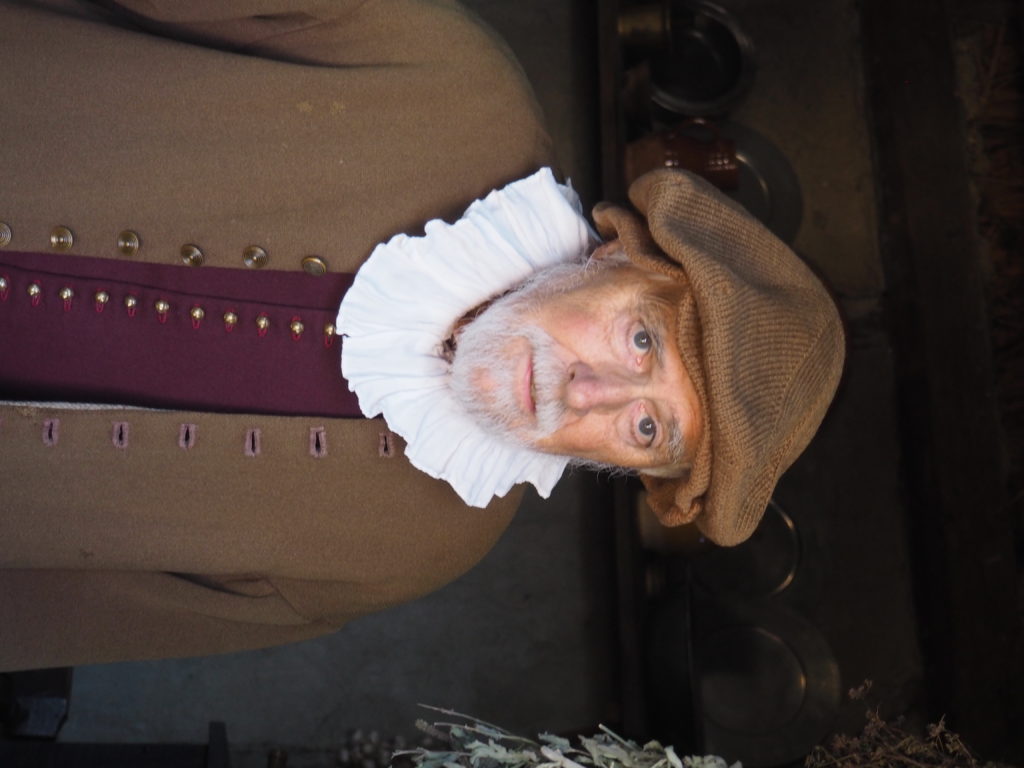




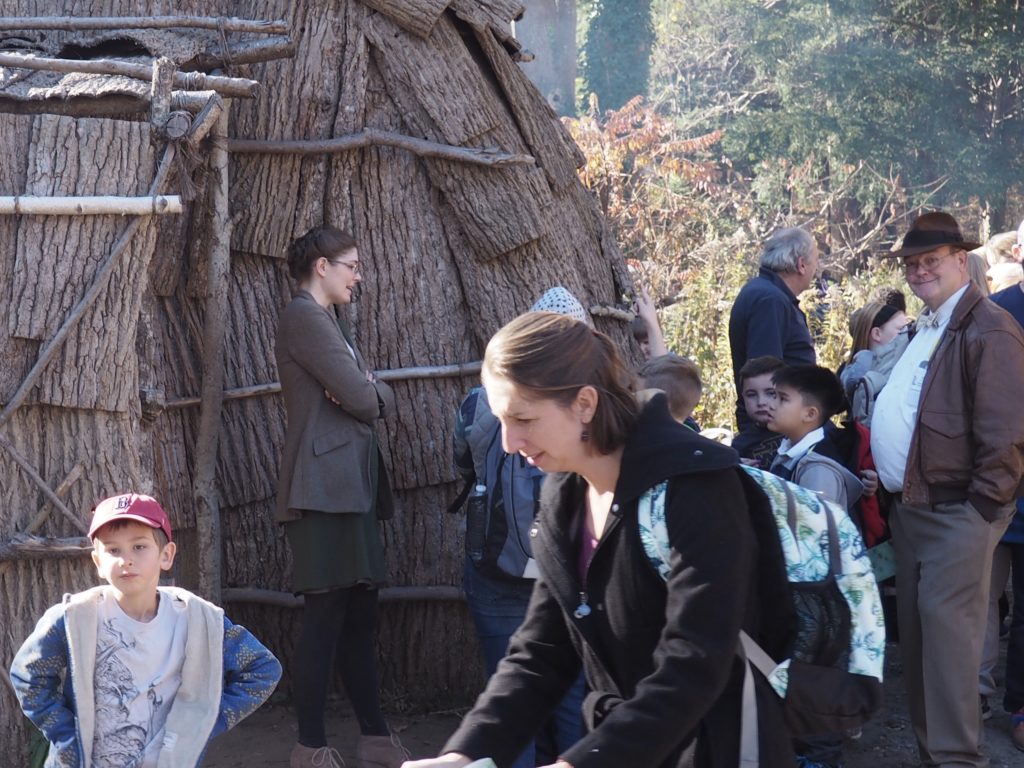


Bringing It Home
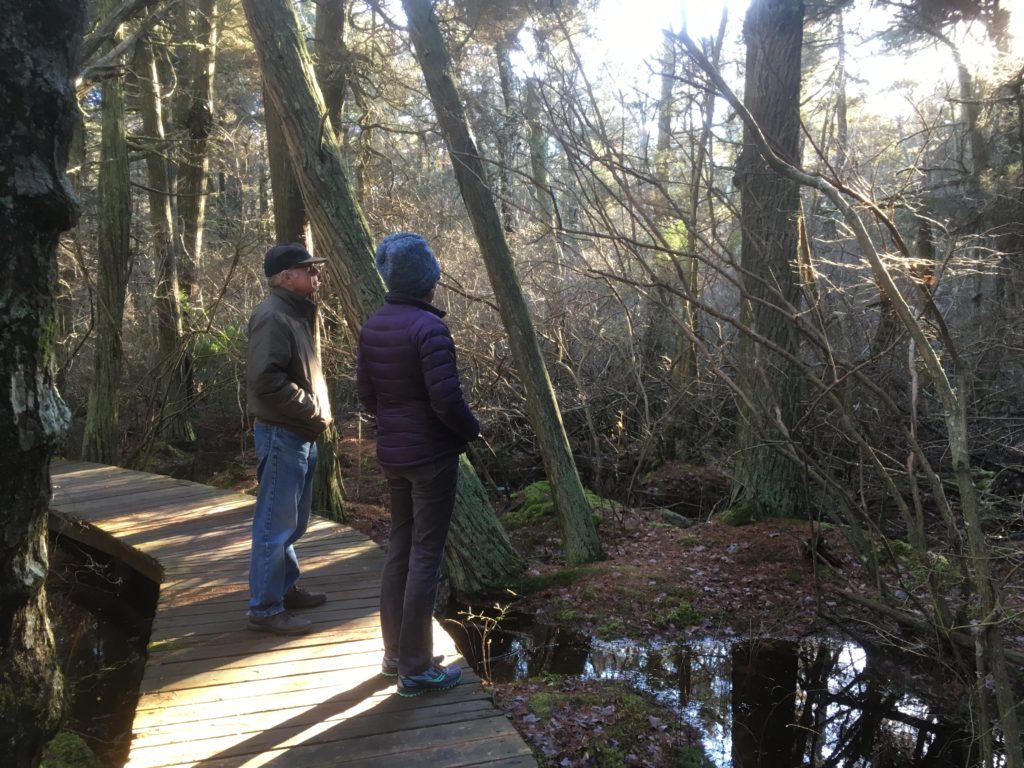
It’s not a diorama and it’s not Louisiana. As featured in a prior post, the White Cedar Swamp in Wellfleet seems like a magical nether world at any time of year, where you expect some giant winged creature to come flapping out of the deep woods scaring the wits out of you. It’s beautiful, actually.
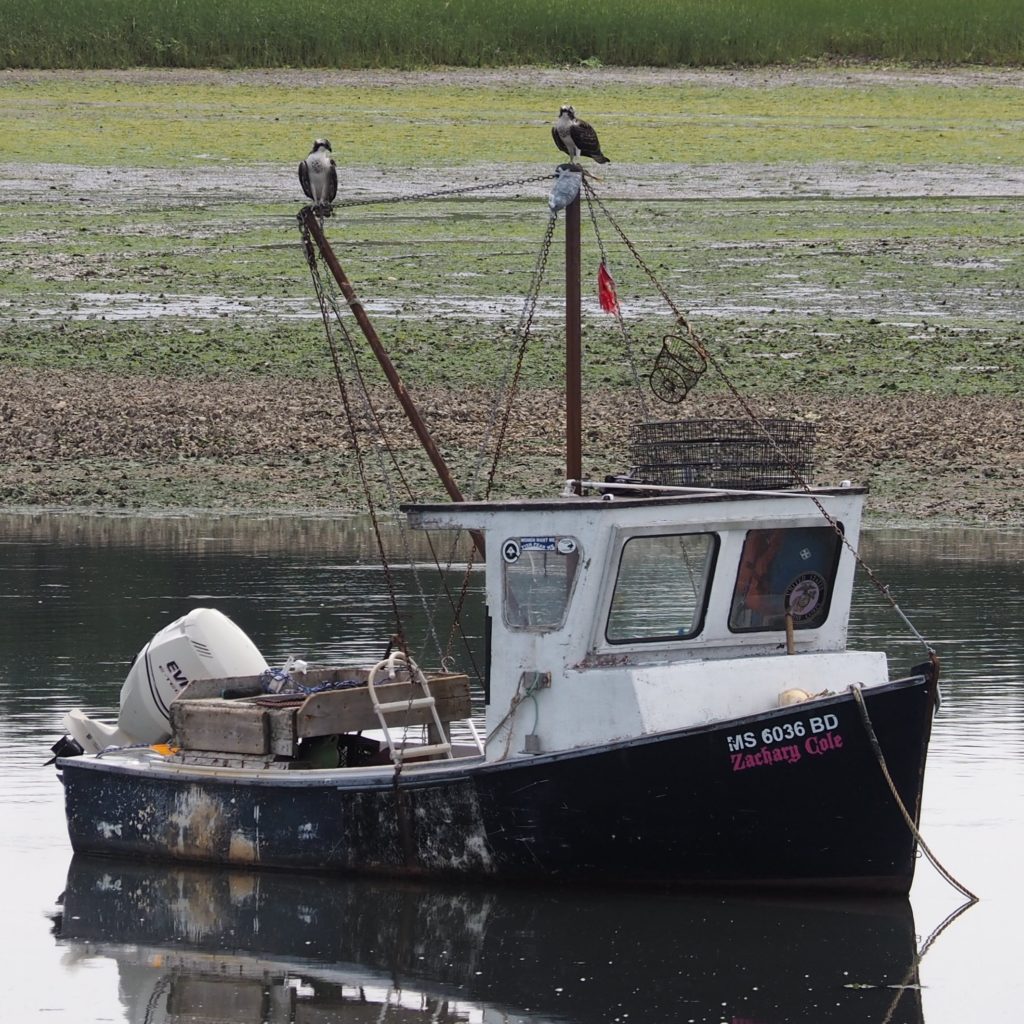
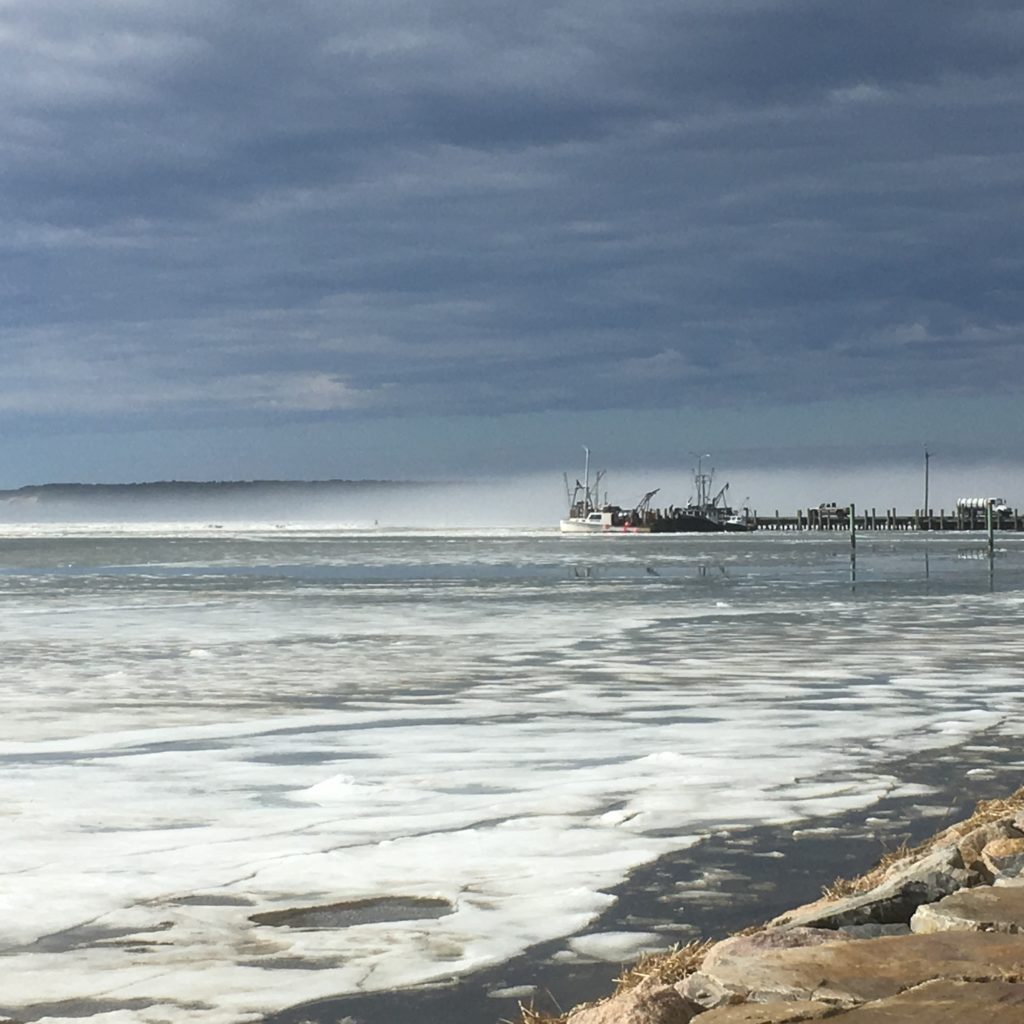
Then there is the simplest place to take a walk, with a 1 1/4 mile marked track around the perimeter of the pier at Wellfleet Harbor. In summer the thing is to walk carefully and quickly under the ospreys’ nest, to avoid being splattered. In fall, you might spot a stranded mola or ocean sunfish, as we did. In winter, when the docks have all been pulled and stacked, all crusted with barnacles, and the small boats have found a parking space on top of the pier you can still be surprised by how beautiful it all is.
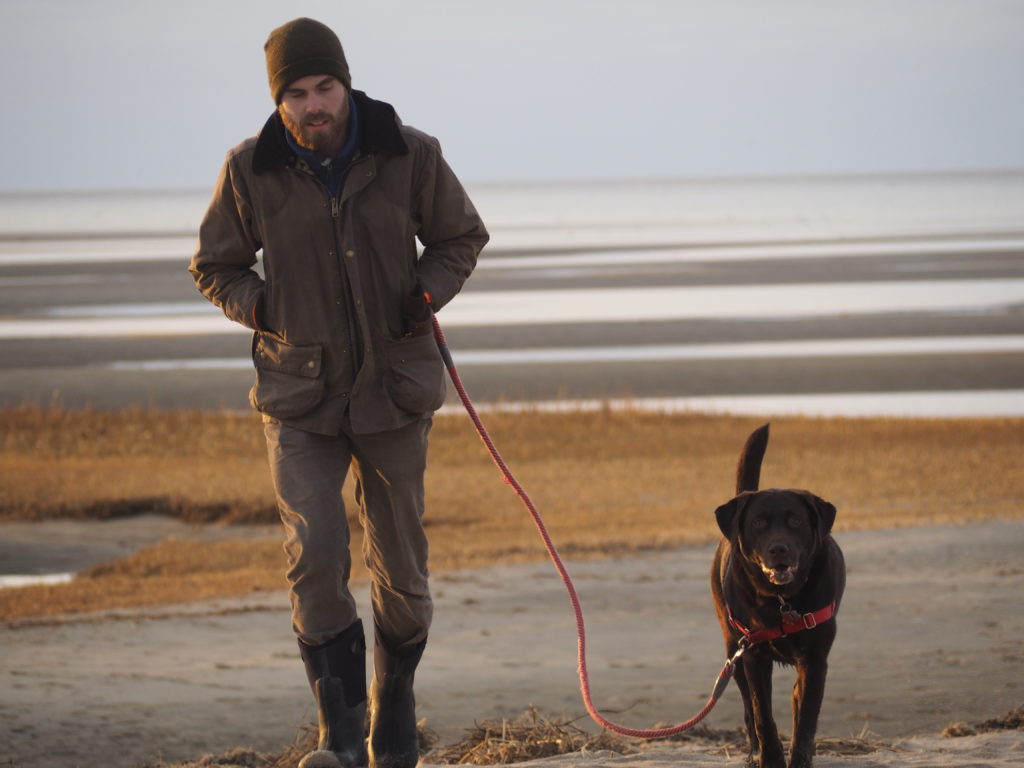
Back where we start, in Eastham.

